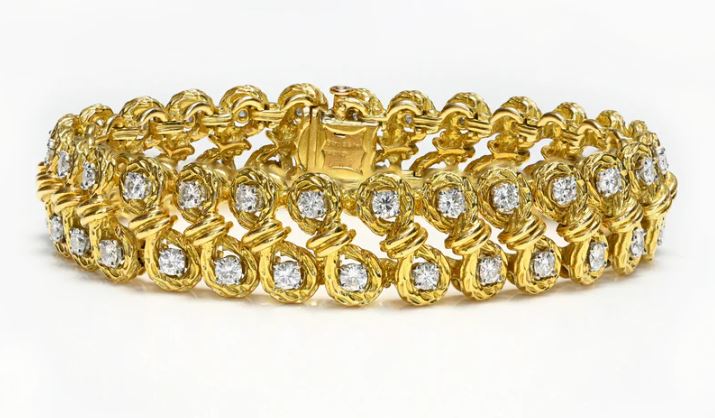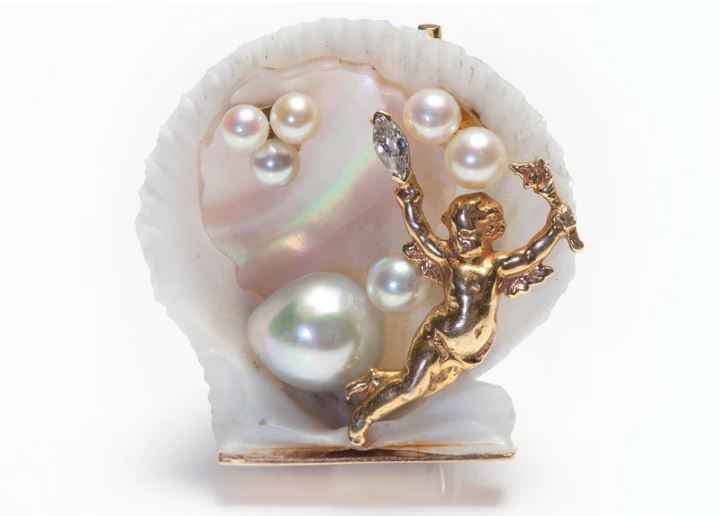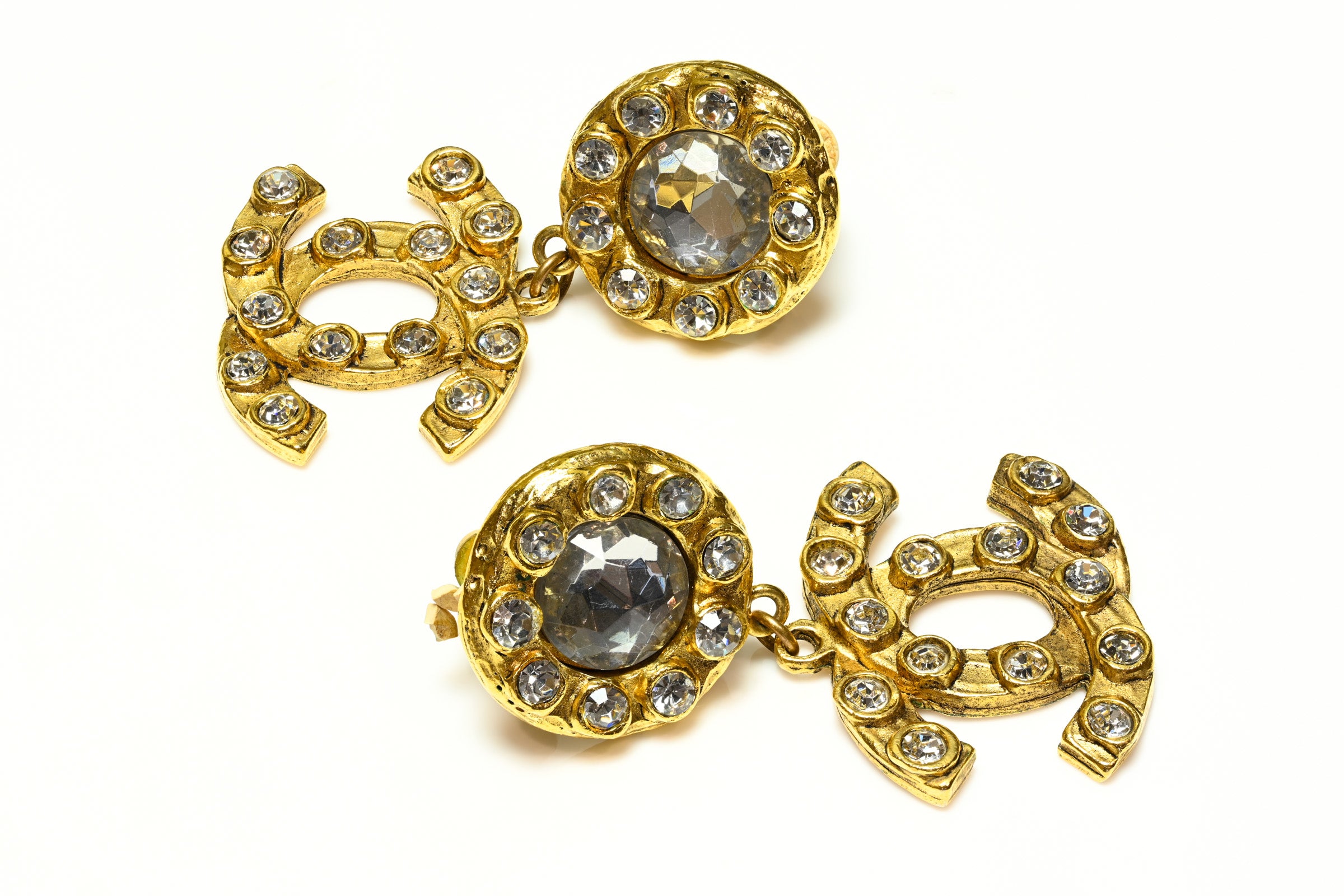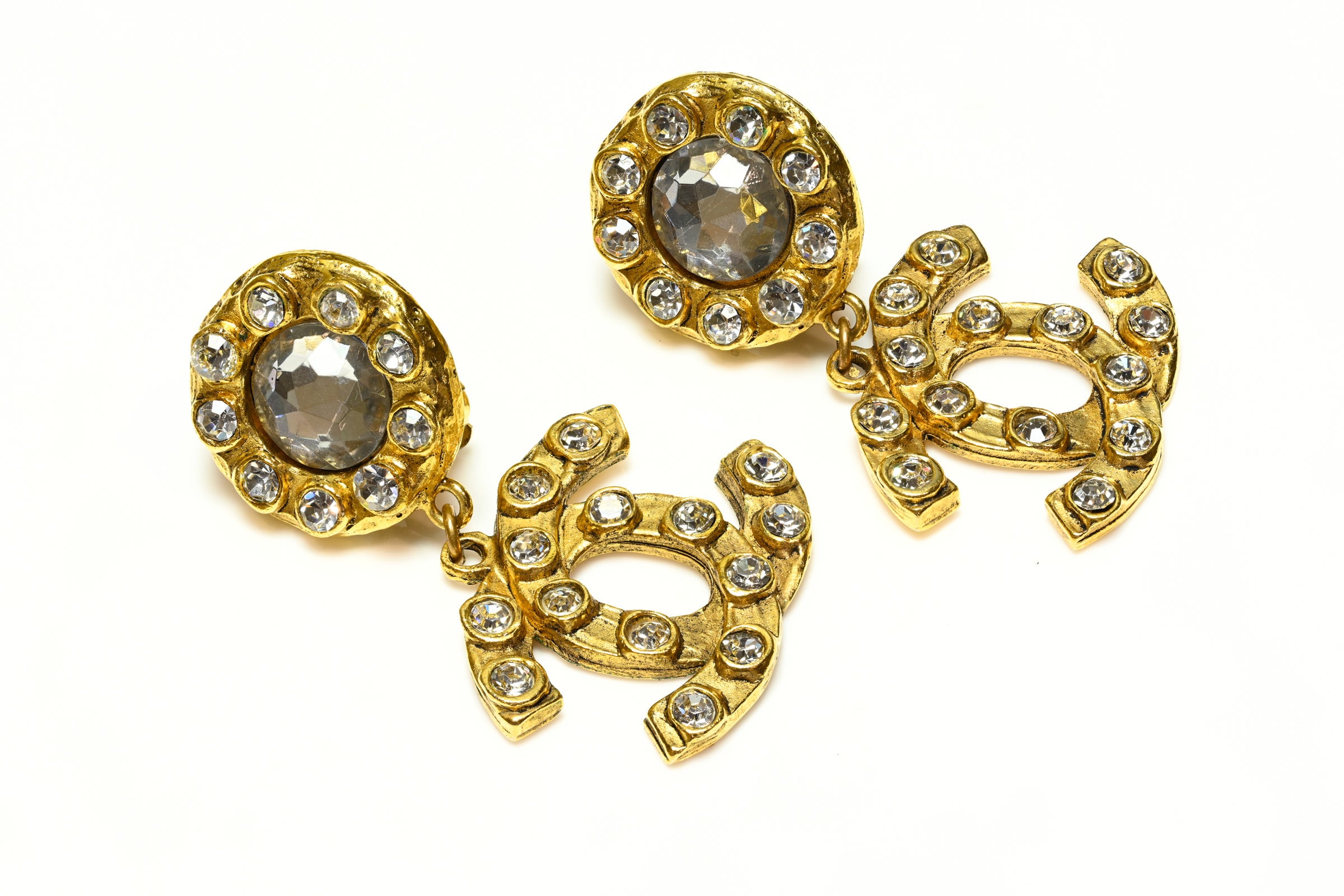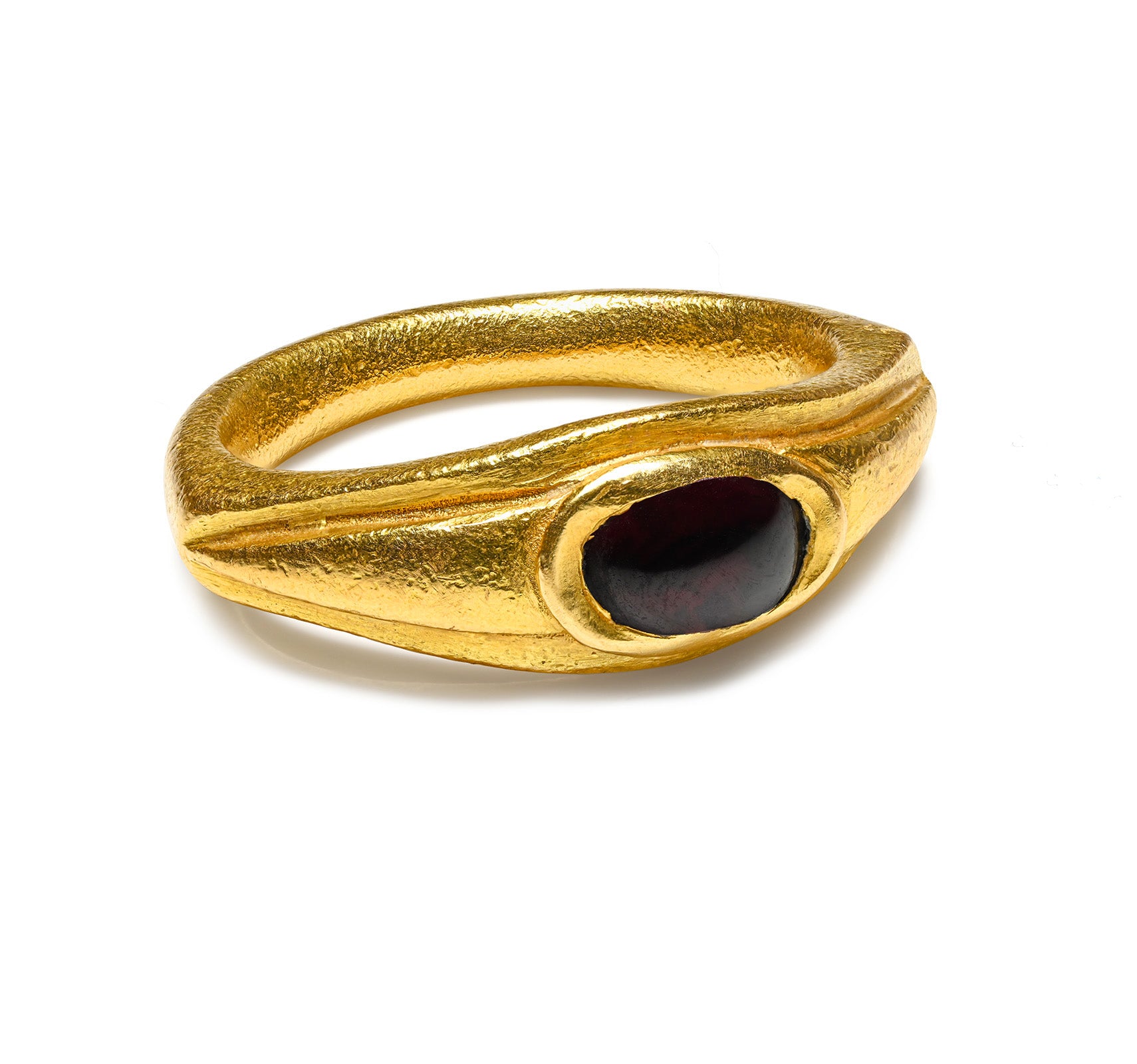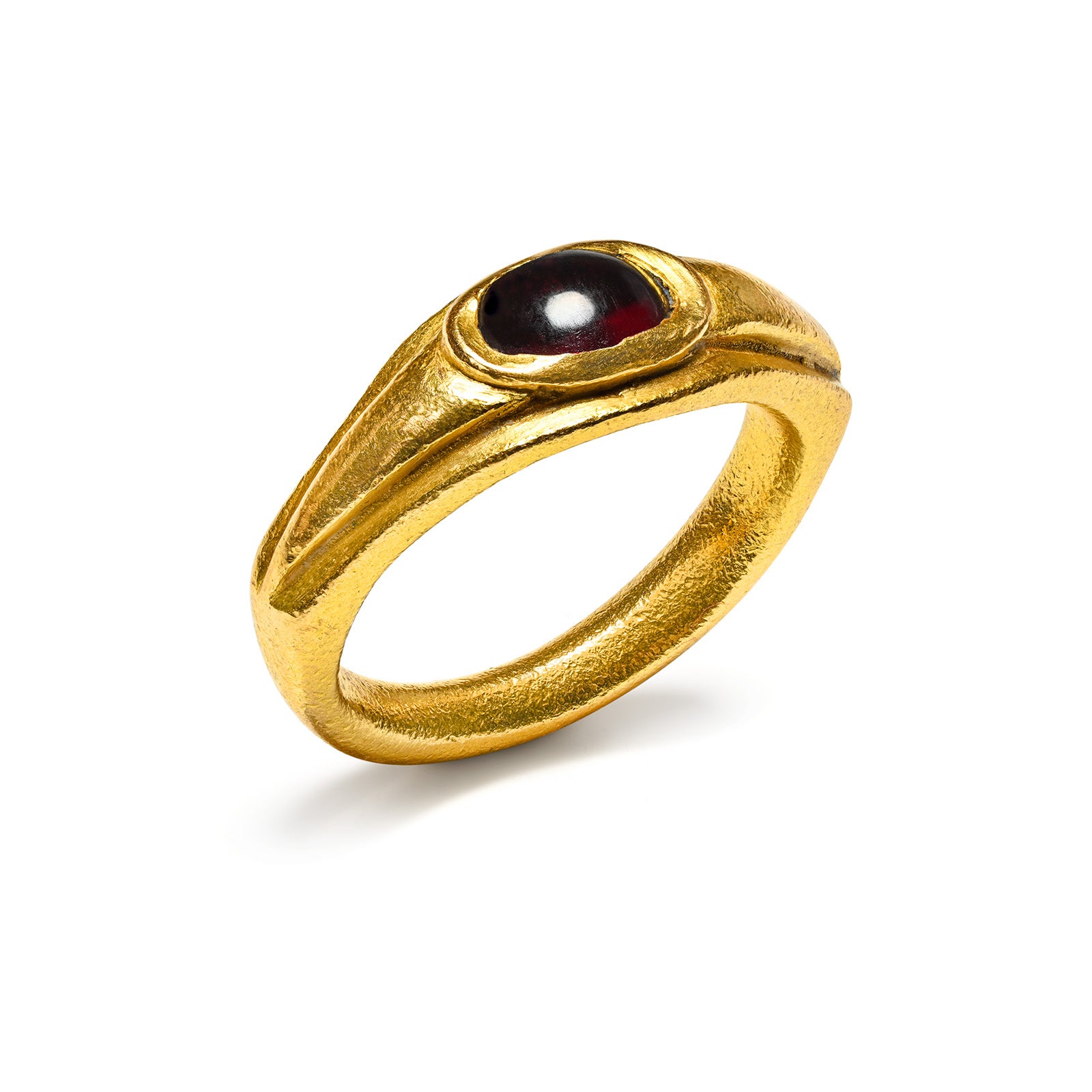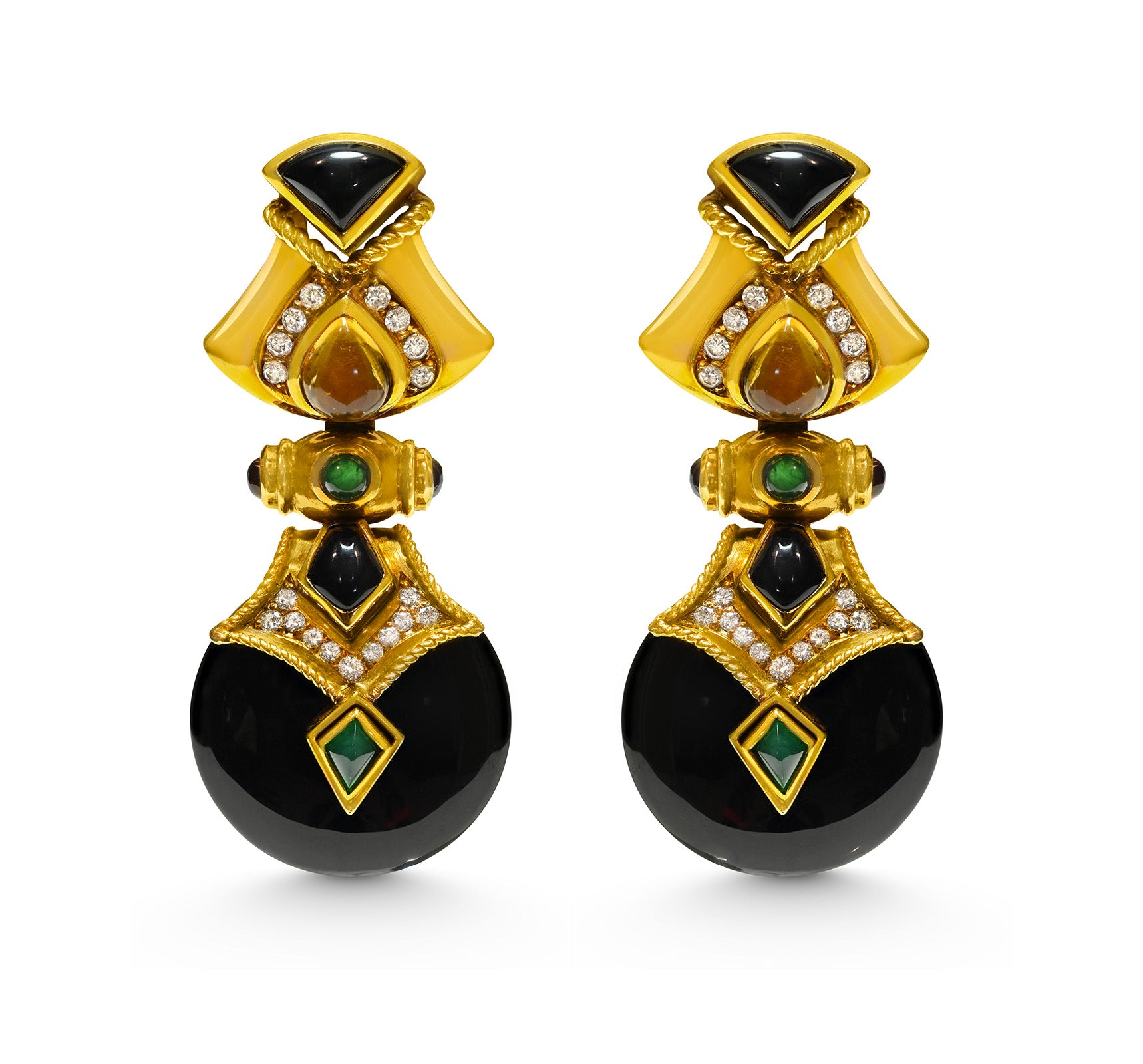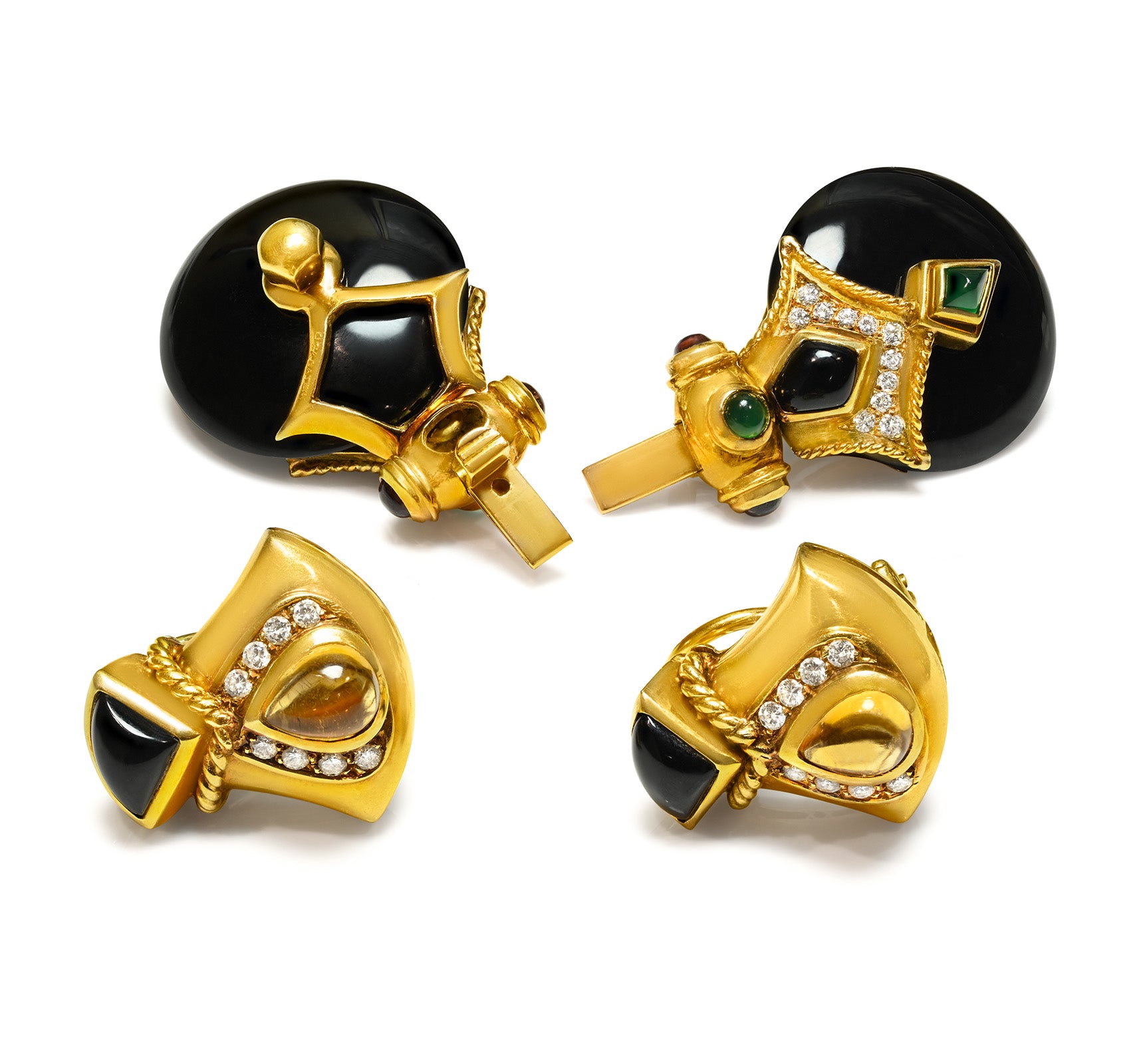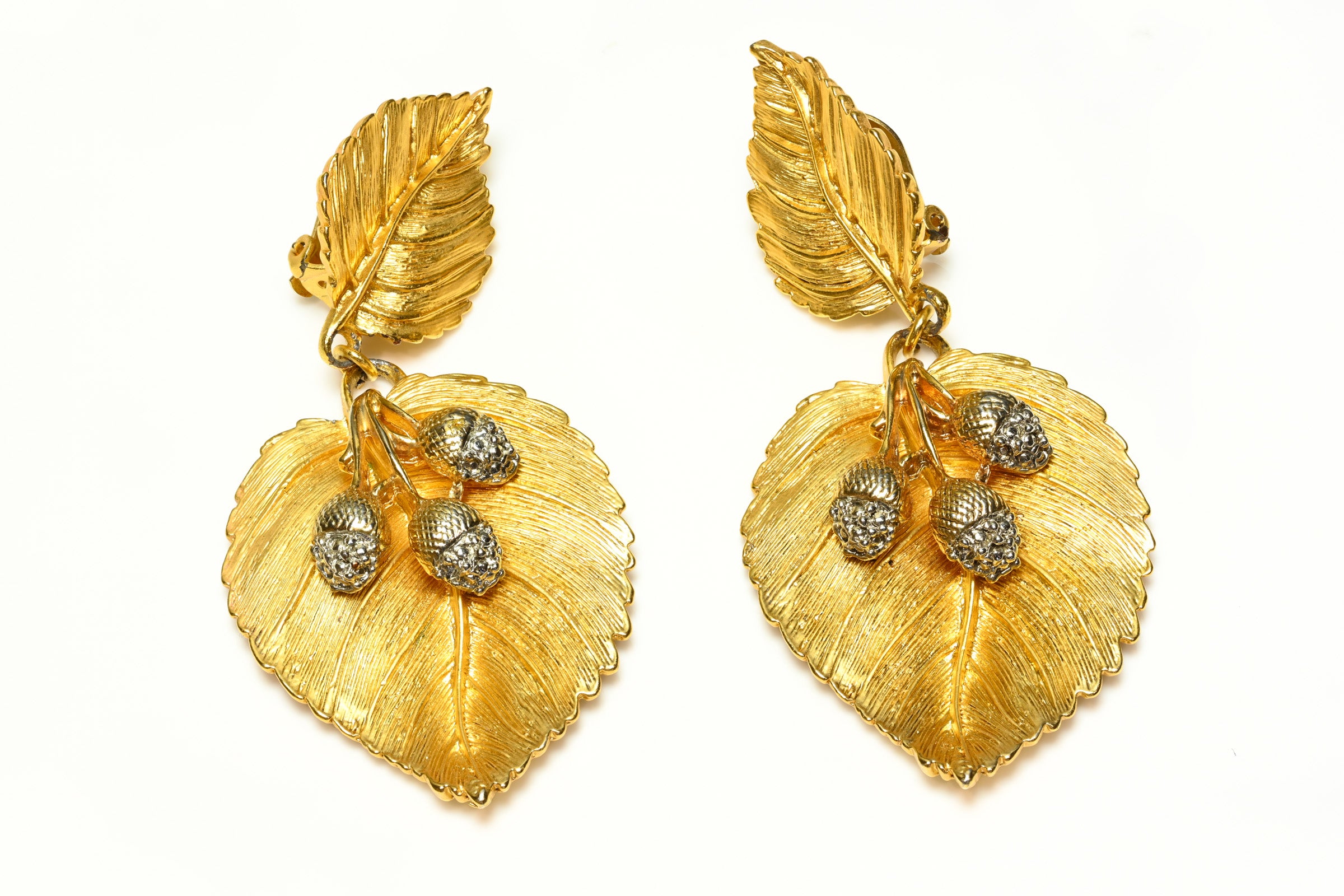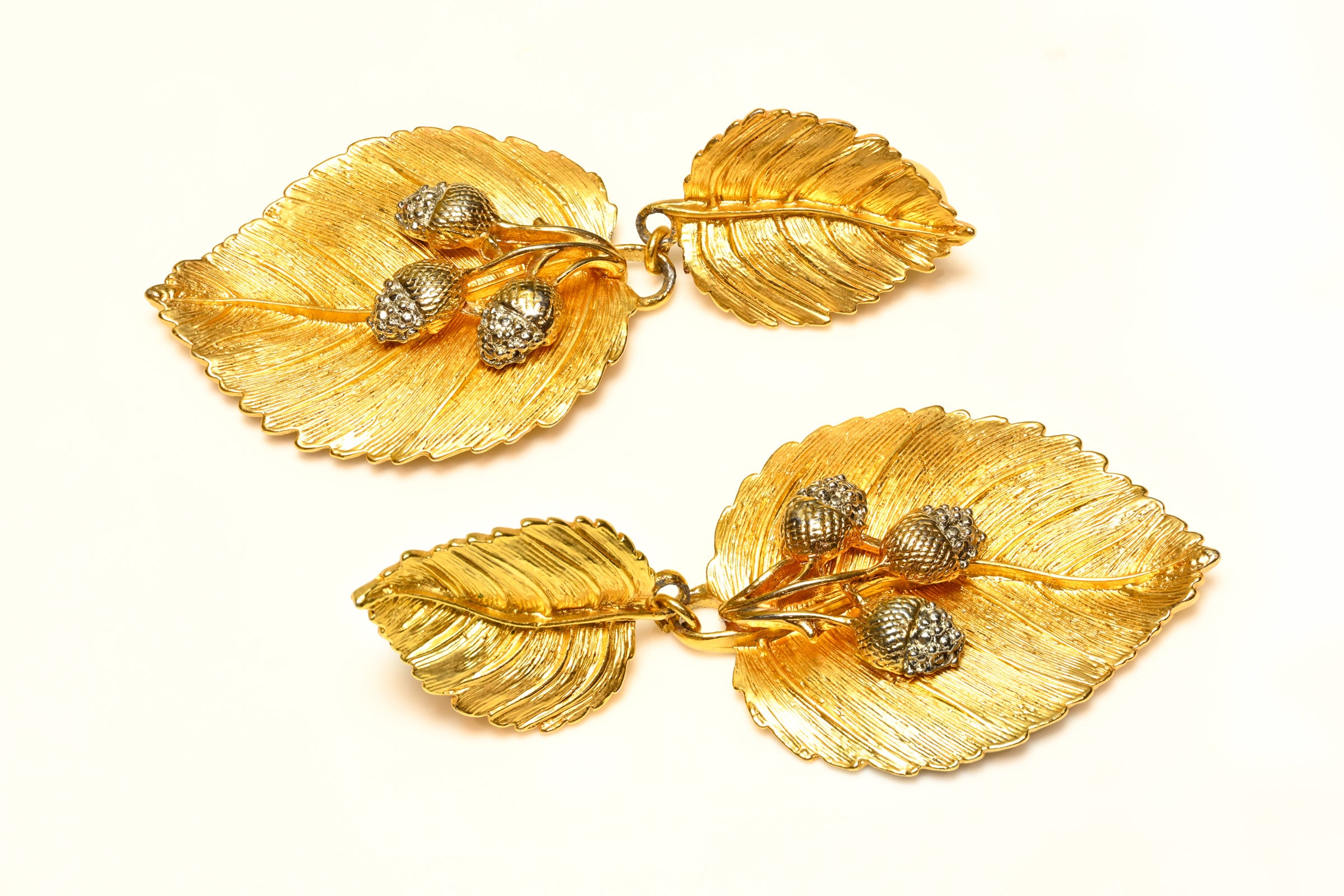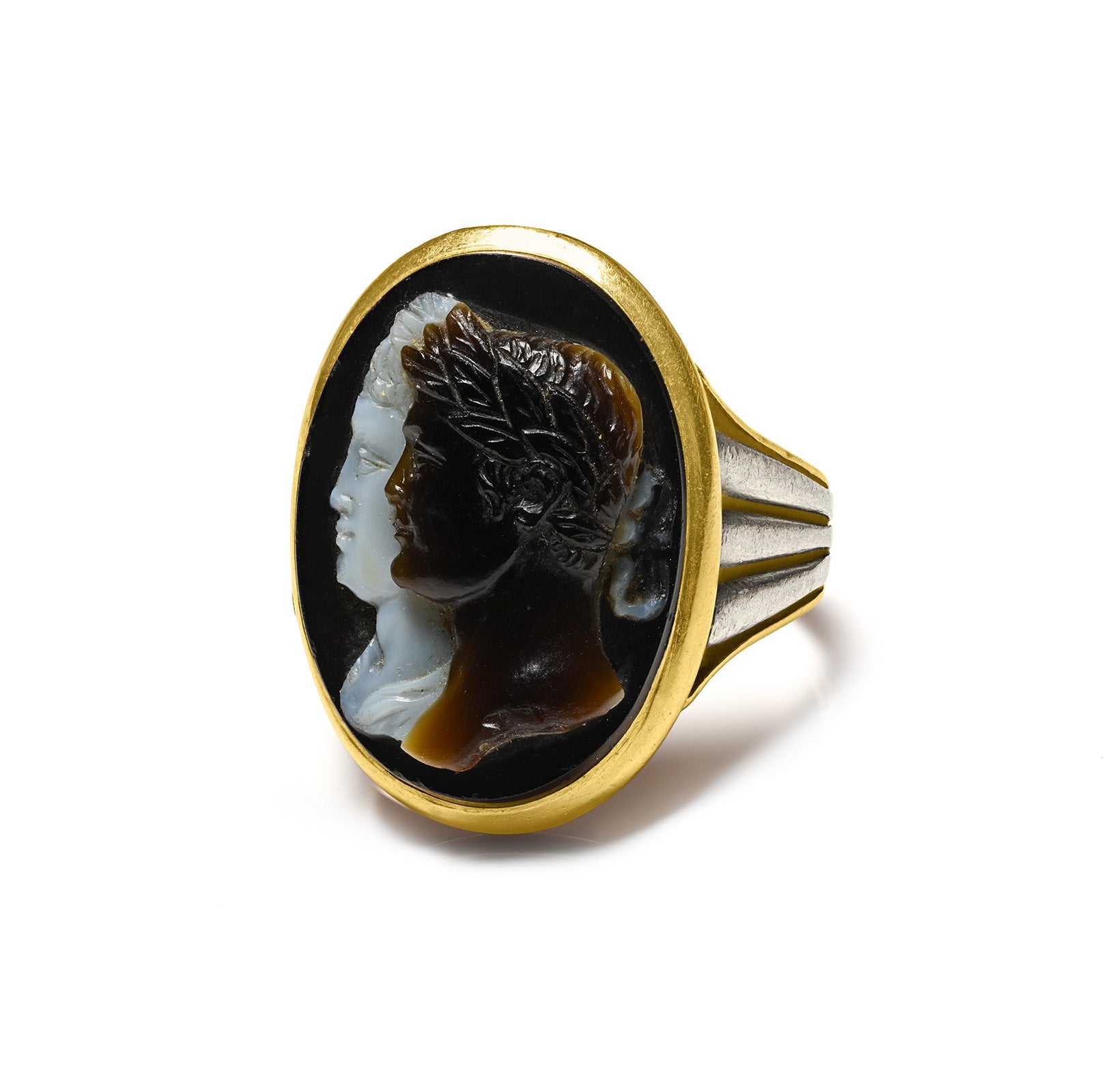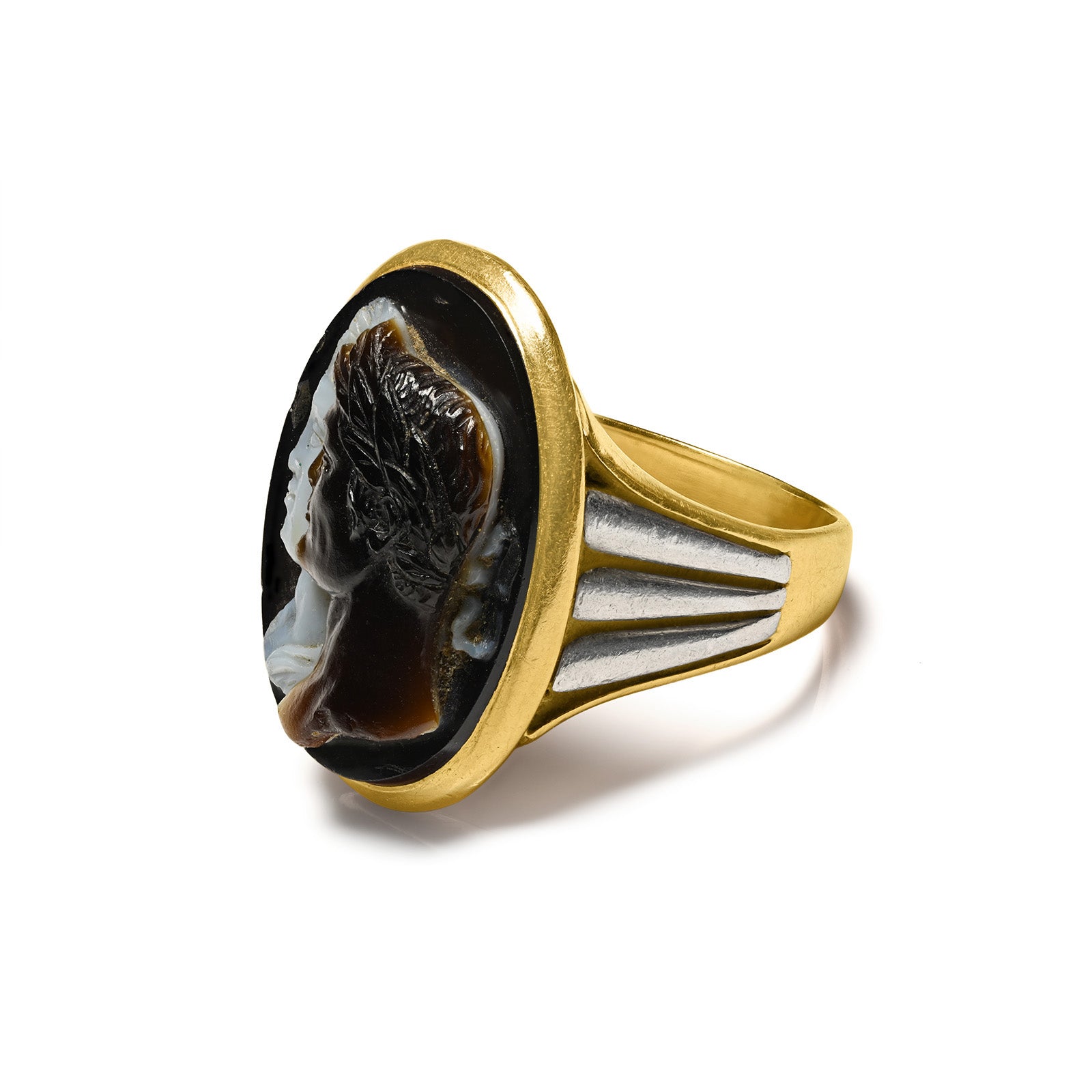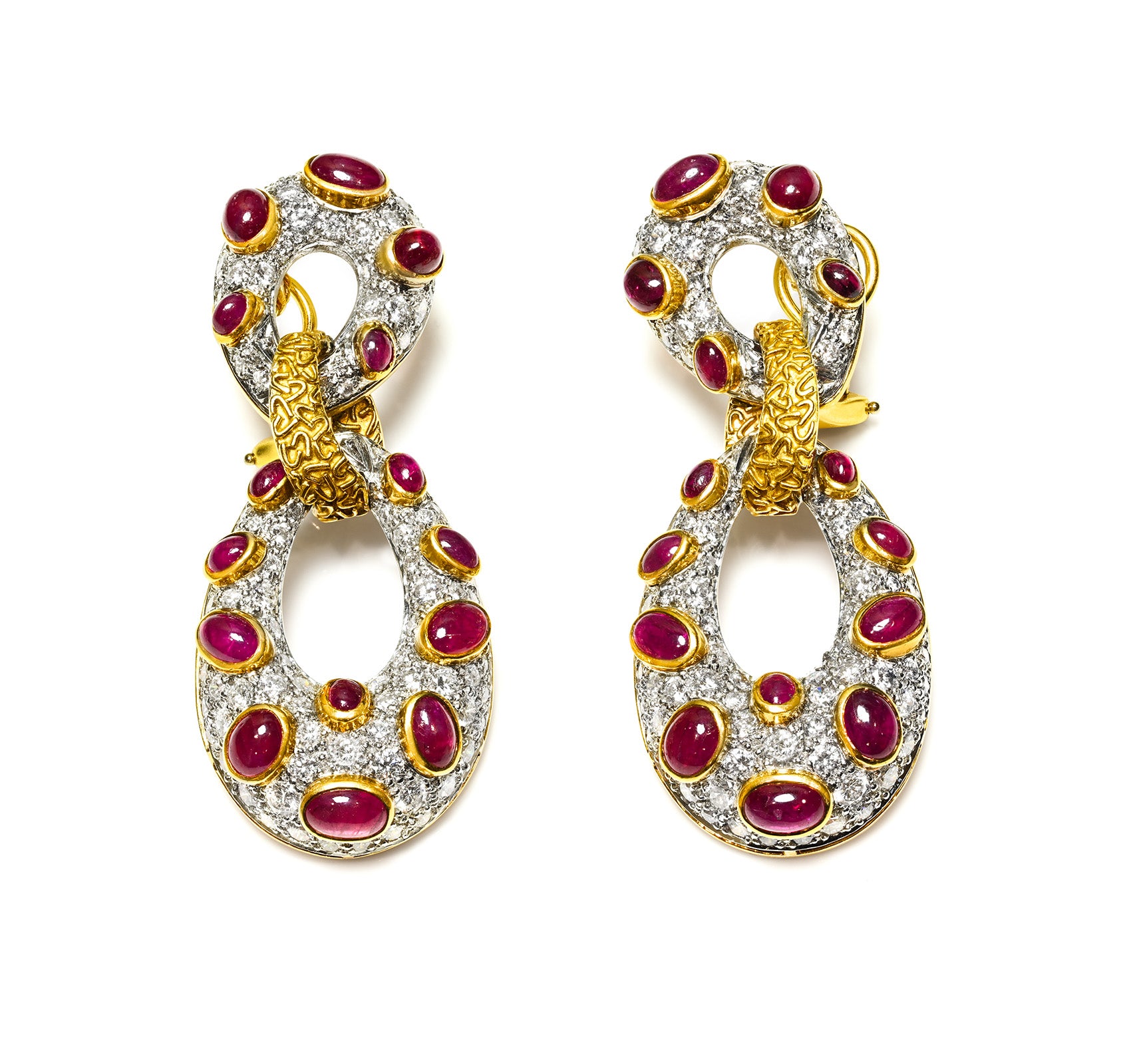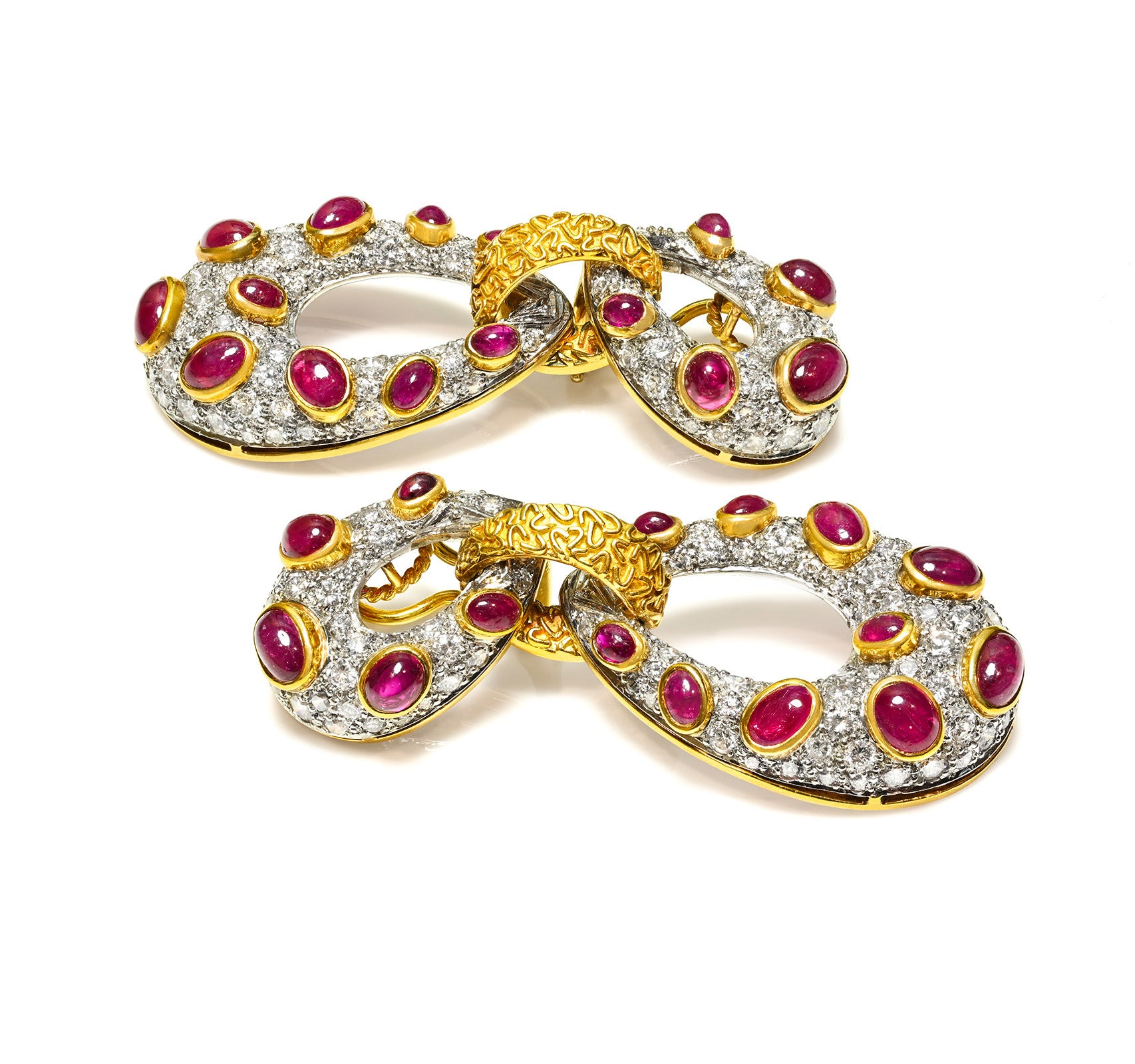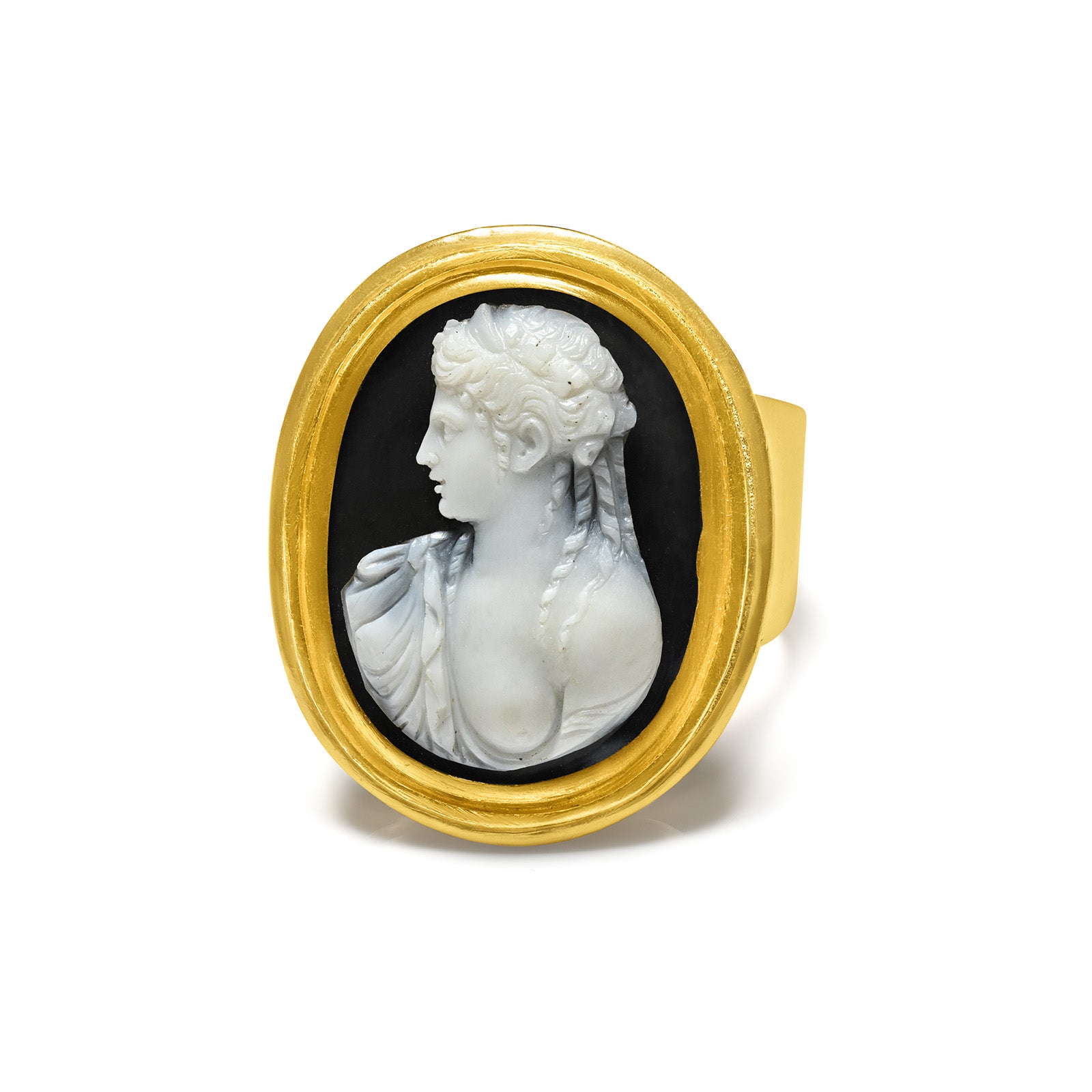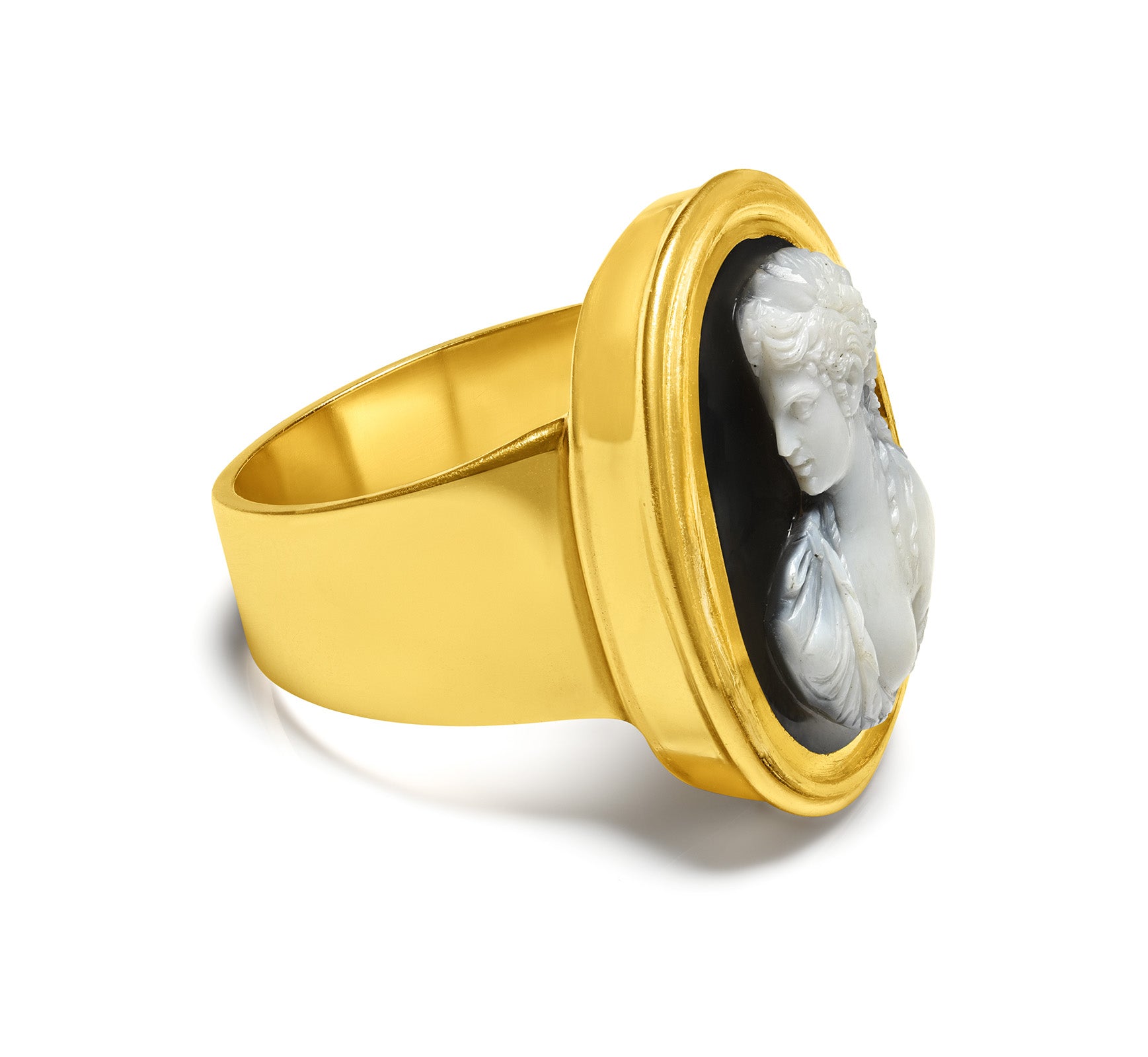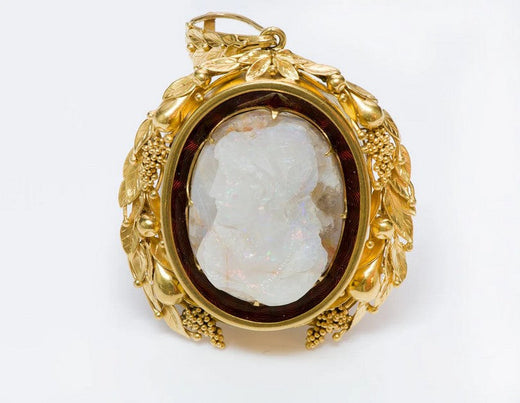
The Greatest Revivalist Master Jewelers in History
Uncover the stories of the greatest Revivalist master jewelers in history, whose creations blended ancient artistry with unparalleled craftsmanship.
Throughout the 18th and 19th centuries, a unique movement emerged in the world of fine jewelry: the Revivalist Movement, a celebration of artistry that honored the grandeur of the past.
Inspired by masterpieces of ancient civilizations, Renaissance aesthetics, and Gothic elegance, these master jewelers sought to resurrect time-honored techniques and reimagine historical motifs in ways that resonated with the tastes of their era.
While contemporary conversations about jewelry often center on iconic names like Fabergé and Cartier, it was the Revivalist jewelers who built a bridge between antiquity and modernity, blending historical authenticity with unparalleled craftsmanship.
These artisans didn’t just create jewelry; they revived lost traditions, transforming history into wearable treasures that captivated royalty, collectors, and connoisseurs alike.
Below, we explore the legacies of the greatest Revivalist jewelers in history, whose visionary works continue to inspire and influence the world of fine jewelry.
The Revivalist Jewelers (18th–19th Century)
1. Archaeological Revival Pioneers
The Archaeological Revival movement drew heavily on the artistry of ancient Greek, Roman, and Etruscan civilizations.
These master jewelers resurrected long-lost goldsmithing techniques, such as granulation and filigree, to create pieces that bridged the past and present.
Their work was driven by a passion for historical authenticity and cultural preservation, creating a legacy of timeless designs.
Key figures:
- Castellani Dynasty (Fortunato Pio Castellani, Alessandro Castellani, Augusto Castellani)
- Carlo Giuliano
- Eugène Fontenay
- Jean-Baptiste Fossin
- Jules Fossin
- Luigi Podio
- Alfred André
- Pietro Belli
- Fortunato Raffaele Suppini
- Carlo Barberis
1. The Castellani Dynasty (1814 to 1930)
The Castellani family is one of the most significant dynasties in the history of jewelry, renowned for their pioneering role in the 19th-century Archaeological Revival movement. Their innovative designs and dedication to historical authenticity redefined jewelry-making as both an art and a means of cultural preservation.
Fortunato Pio Castellani (1794–1865), the patriarch, laid the foundation for the family’s legacy in 1814 when he established his workshop in Rome. Castellani was deeply inspired by the craftsmanship of ancient Greek, Roman, and Etruscan goldsmiths, which he sought to revive in his own work.
By rediscovering ancient techniques such as granulation and filigree, Castellani elevated jewelry design to new heights, transforming it from mere decoration into a medium for storytelling.
Fortunato collaborated closely with prominent antiquarians of his time, including Michelangelo Caetani, Duke of Sermoneta. Caetani, a scholar and connoisseur of ancient art, encouraged Castellani to focus on Etruscan-inspired designs and provided valuable insights and sketches based on his archaeological studies. Their partnership resulted in some of Castellani’s most iconic works, which blended archaeological accuracy with contemporary refinement.
The Castellani House soon expanded its repertoire, introducing elements of medieval, Greek, and Egyptian design into their pieces. They were among the first to incorporate Christian-Byzantine and classical Greek motifs into neo-archaeological frames, often in micro-mosaics.
In addition to creating jewelry, Castellani was a passionate advocate for preserving Italy’s cultural heritage. He is credited with establishing a collection of traditional Italian goldsmithing techniques and rural ornaments, preserving them for future generations.
In 1840 Castellani founded a school for goldsmiths with the aim of enhancing and applying ancient techniques, including glyptics and minute mosaics, thus carrying out a work of safeguarding traditional popular goldsmiths by collecting and preserving precious ornaments from rural areas.

Fortunato Pio Castellani via Wikimedia Commons
Alessandro Castellani (1823–1883), Fortunato’s eldest son, played a pivotal role in expanding the family’s influence beyond Italy. In the late 1850s, Alessandro opened a branch of the Castellani workshop in Paris, cementing the brand’s reputation among European aristocracy. The boutique on the Champs-Élysées not only showcased Castellani jewelry but also became a cultural hub where Alessandro delivered lectures on antique jewelry, captivating Parisian high society.
Alessandro also participated in the 1862 Universal Exhibition in London, where he presented Castellani’s renowned "Mundus Muliebris" collection. His scholarly lecture, "Antique Jewelry and Its Revival," was widely praised and established him as a thought leader in the Archaeological Revival movement.
Building on this success, Alessandro collaborated with archaeologists and historians to study ancient jewelry firsthand, ensuring the Castellani creations reflected scholarly precision and artistic beauty. His jewelry, celebrated for its meticulous craftsmanship, often featured granulation, scarabs, and intricate mosaics, which appealed to elite clients across Europe.
After leaving Paris, Alessandro moved to Naples, where he continued the family’s work. By the 1870s, the leadership of the Rome workshop had transitioned to Augusto Castellani, his younger brother.

Alessandro Castellani via Wikimedia Commons
Augusto Castellani (1829–1914), the youngest of the dynasty, further elevated the family’s legacy by combining artistry with scholarship. Known for his meticulous research, Augusto published several works on ancient jewelry, helping to advance the understanding of historical goldsmithing techniques.
Augusto also played a significant role in cultural preservation, overseeing the Castellani collection of ancient artifacts and jewelry. This collection, which includes significant pieces from Greek, Roman, and Etruscan civilizations, is now housed in renowned institutions such as the National Etruscan Museum at Villa Giulia and the Capitoline Museums in Rome.
Together, the Castellani family revolutionized the perception of historical jewelry. Their designs bridged the gap between antiquity and modernity, blending archaeological authenticity with contemporary elegance. Through their meticulous craftsmanship and scholarly pursuits, they transformed jewelry into a medium for storytelling and cultural preservation.
Their legacy endures not only in the iconic creations displayed in museums worldwide but also in the techniques and philosophies they championed. The Castellani name remains synonymous with the Archaeological Revival movement, a testament to their vision, artistry, and dedication to preserving the beauty of the past for future generations.

Painting of Augusto Castellani - Carlomorino via Wikimedia Commons
Some examples of Castellani pieces by DSF Antique Jewelry:

Antique Gold Ancient Roman Coin Pendant Attrib. to Castellani

Antique Castellani Carnelian Gold Stick Pin

Antique Castellani Yellow Gold Mosaic Brooch

Castellani Gold Stick Pin

Antique Gold Ancient Coin Brooch Attrib. to Castellani

Antique Gold Enamel Charm Attributed to Castellani
2. Carlo Giuliano (1831-1895)
Born in Naples, Carlo Giuliano was an Italian-born jeweler who brought the brilliance of Renaissance-inspired designs to Victorian London, establishing himself as one of the foremost masters of the Archaeological Revival movement.
In 1860, Carlo Giuliano moved to London, a city flourishing with Victorian wealth and a growing appreciation for historical art. In 1874, he opened his own atelier in Piccadilly, offering unique designs that captivated British aristocracy and royalty alike.

Antique Carlo Giuliano Diamond Moonstone Enamel Wings Brooch - DSF Antique Jewelry
Giuliano's work was characterized by its exquisite enamel detailing, a technique he mastered with unrivaled precision. His creations often featured vivid, intricate patterns in vibrant shades of blue, green, and red, inspired by Renaissance and Moorish art.
Unlike many jewelers of his time, Giuliano preferred to work with unconventional gemstones such as turquoise, opals, and garnets, which he skillfully integrated into his designs.

Antique Carlo Giuliano Gold Carved Carnelian Egyptian Revival Pendant - DSF Antique Jewelry
One of his hallmarks was the blending of styles. While deeply rooted in the Renaissance Revival, his pieces also reflected Victorian aesthetics, creating a fusion that appealed to his elite clientele.
His work often included symbolic motifs, such as cameos, floral patterns, and geometric designs, showcasing his ability to reinterpret historical elements in a modern context.
Giuliano's atelier quickly became a hub of artistic innovation, attracting a loyal following among London's elite. His clients included prominent figures such as Queen Victoria and members of the British aristocracy, who valued the exclusivity and artistry of his work.
Unlike other jewelers, Giuliano refused to mass-produce his creations, ensuring that each piece was a unique masterpiece.

Carlo Giuliano Antique Baby Moonstone Enamel Gold Brooch - DSF Antique Jewelry
After his death in 1895, his sons, Carlo Joseph and Arthur Alphonse Giuliano, took over the atelier, ensuring that their father’s artistic vision and dedication to craftsmanship endured.
Some of his finest creations are now part of prominent museum collections, serving as timeless examples of how Renaissance artistry could be reimagined for Victorian tastes.
His legacy continues to inspire collectors and designers alike, bridging the gap between history and innovation in jewelry design.
3. Eugène Fontenay (1823-1887)
Eugène Fontenay was a Parisian jeweler whose work transformed the Archaeological Revival movement into an art form that blended meticulous craftsmanship with intellectual curiosity.
Born into a family of goldsmiths, Eugène Fontenay inherited his father’s workshop and quickly established himself as a leader in the mid-19th-century jewelry renaissance, driven by a fascination with ancient civilizations.

Eugène Fontenay 18K Gold Enamel Diamond Etruscan Revival Locket Pendant - DSF Antique Jewelry

Antique Eugène Fontenay Gold Enamel Locket Pendant - DSF Antique Jewelry
Eugène Fontenay viewed ancient jewelry not merely as inspiration but as a challenge to reimagine techniques that had been lost to time.
This intellectual rigor was evident in his creations, which often featured motifs like scarabs, lotus flowers, and sphinxes—symbols rich with cultural and spiritual meaning.

Antique 18K Gold Enamel Diamond Pendant Locket Attributed to Eugène Fontenay - DSF Antique Jewelry

Eugène Fontenay Gold Enamel Diamond Cherub Pendant - DSF Antique Jewelry
Eugène Fontenay’s technical contributions were equally groundbreaking. He was a pioneer in reviving the ancient technique of granulation, painstakingly applying tiny gold spheres to create intricate textures.
But he didn’t stop there—Fontenay experimented with gold alloys to produce unique hues, adding depth and dimension to his designs. This technique, however, was also reintroduced by other revivalist jewelers such as Castellani, suggesting a broader movement in which Fontenay played a significant role.
His technical mastery earned him international recognition, including a triumph at the 1867 Exposition Universelle in Paris, where his work was celebrated for its elegance and authenticity. While Fontenay participated successfully in this exhibition, details about specific awards or accolades remain unclear.

Antique Etruscan Revival Gold Enamel Locket Pendant Attrib. to Eugène Fontenay - DSF Antique Jewelry
Beyond his technical and artistic achievements, Eugène Fontenay was a mentor and innovator who helped shape the future of French jewelry. His workshop became a training ground for artisans eager to learn his techniques, ensuring that the knowledge he rediscovered would not be lost again.
Eugène Fontenay also had a keen understanding of his clientele, catering to European royalty and the cultural elite. Although specific commissions for royal families are not well-documented, his work was highly coveted by aristocratic clients in Paris.
His ability to combine archaeological accuracy with contemporary luxury made his pieces highly coveted in Parisian society.
Despite his untimely death in 1887, Eugène Fontenay's legacy endures in the craftsmanship and philosophy he championed. His creations are now considered masterpieces of 19th-century jewelry, and a select few are displayed in museums and private collections worldwide.
More than just a jeweler, Eugène Fontenay was a bridge between the ancient and modern worlds, proving that history, when revived with artistry and respect, can become timeless.
4. Jean-Baptiste Fossin (1786–1848)
Jean-Baptiste Fossin was a visionary jeweler who redefined the art of jewelry-making during France’s Romantic era. As the chief designer of the esteemed Maison Chaumet, Fossin played a pivotal role in steering the house toward naturalism, elegance, and emotional expression.
His work marked a departure from the grandeur of Napoleonic symbolism, ushering in a new era of jewelry that celebrated the beauty of nature and the refinement of human emotion.
Jean-Baptiste Fossin’s designs were heavily inspired by the Romantic movement, which emphasized passion, individuality, and the sublime beauty of the natural world.
His creations often featured delicate motifs such as blooming flowers, twisting vines, and leaves rendered in gold with astonishing realism. Fossin’s attention to detail was unparalleled; he pioneered techniques that allowed gold to mimic organic textures, creating pieces that seemed almost alive.
One of Fossin’s defining contributions was his mastery of repoussé and chasing, techniques that allowed him to craft intricate, sculptural designs. These methods, widely used by other jewelers of the era, were refined under his guidance at Maison Chaumet, showcasing his unique approach to depth and texture.
Fossin’s designs stood in stark contrast to the rigid neoclassical styles that had dominated the early 19th century. By infusing his pieces with Romantic sensibilities, Fossin appealed to the emotional and aesthetic preferences of a new generation of patrons.
Fossin was not only a jeweler but also a mentor, training a talented team of craftsmen to carry forward his vision. His son, Jules Fossin, succeeded him at Chaumet, ensuring that the Romantic ethos he championed would endure.
Under Fossin’s guidance, Chaumet solidified its position as one of France’s premier jewelry houses, blending technical innovation with a deep appreciation for artistry.
While much of Jean-Baptiste Fossin’s work is now housed in private collections, specific examples of his pieces are rarely exhibited publicly. His influence can still be felt in the designs of modern jewelry.
His legacy lies not only in his exquisite creations but also in his transformative impact on French jewelry during one of its most artistic periods.

Fossin - Bibliothèque nationale de France via Wikimedia Commons
5. Jules Fossin (1808–1869)
Jules Fossin, the son of Jean-Baptiste Fossin, took the foundations laid by his father and built a new vision for Chaumet that expanded its influence far beyond Paris.
A master craftsman in his own right, Jules preserved the Romantic naturalism his father had championed, while adding his own flair by adapting designs to suit the tastes of an increasingly cosmopolitan clientele.
Working in mid-19th-century Paris, Jules Fossin remained loyal to the Romantic tradition. His pieces often featured motifs drawn from the natural world, such as flowering branches, leaves, and intertwined vines, all crafted in gold with painstaking attention to detail.
However, Jules Fossin also experimented with subtler elements of architectural design, introducing delicate Gothic touches that reflected the cultural fascination with medieval history at the time. These Gothic influences added a layer of complexity and artistic depth to his Romantic designs, distinguishing his work from other jewelers of the era.
Jules Fossin is known to have collaborated with British clients and artisans to expand Chaumet’s reach. His designs—sometimes incorporating motifs of English roses or heraldic symbols—bridged French refinement and British elegance, earning him commissions from the upper echelons of Victorian society.
Beyond his artistry, Jules Fossin was an innovator. He refined many of his father’s techniques, including lightening gemstone settings to maximize brilliance and incorporating new materials to enhance texture and color. He also introduced practical enhancements that improved the wearability of jewelry, making his designs both elegant and functional.
His approach to jewelry design was not just about aesthetics but also about engineering pieces that were both beautiful and wearable, setting new standards for craftsmanship in the process.
Jules Fossin’s leadership at Chaumet not only expanded the house’s geographic reach but also solidified its place as a leader in Romantic jewelry design. By blending the creative traditions of Paris with the demands of London’s elite, he ensured that Chaumet remained at the forefront of European jewelry.
Although historical documentation of his contributions is limited in some areas, his legacy lies in the seamless integration of artistry and strategy, a combination that continues to define the house’s identity today.
6. Luigi Podio (19th Century)
Luigi Podio was a master goldsmith from Rome whose contributions to the Archaeological Revival movement remain a testament to the meticulous artistry of 19th-century Italy.
His jewelry reflected not only the grandeur of ancient Rome and Etruria but also his personal commitment to precision and innovation in design. Unlike many of his contemporaries, Podio specialized in pieces that blended archaeological accuracy with refined aesthetics, making his work both historically resonant and visually striking.
Luigi Podio’s creations were characterized by their intricate granulation and filigree work, two techniques he executed with exceptional precision. His designs often depicted motifs inspired by ancient Roman and Etruscan art, such as amphora pendants, coiled serpents, and geometric patterns, each crafted with extraordinary attention to detail.
Some historians suggest that Podio’s expertise in mosaic techniques was instrumental in pieces produced by Castellani, though this remains speculative.

Brooch by Firm of Castellani, Mosaic possibly by Luigi Podio - Castellani via Wikimedia Commons
Luigi Podio's work was more than an homage to the past—it reimagined ancient designs for the sophisticated tastes of 19th-century patrons, many of whom were drawn to his jewelry as wearable art steeped in cultural significance.
His pieces often included bold combinations of semi-precious stones, coral, and enamel, which added a modern vibrancy to the traditional forms.
Podio's jewelry was featured in exhibitions across Italy and Europe, where it received praise for its impeccable craftsmanship and unique perspective on the Revivalist style. However, detailed records of these exhibitions and specific pieces attributed to Podio are limited, often blending with Castellani’s legacy.
Historians and collectors today regard Luigi Podio as a vital figure in preserving and reinterpreting the goldsmithing heritage of antiquity. While his role in the Archaeological Revival movement is acknowledged, much of his work remains intertwined with the broader accomplishments of Castellani and other Revivalist jewelers.
7. Alfred André (1839–1919)
Alfred André was not just a jeweler, he was a meticulous historian whose passion for ancient civilizations transformed the jewelry world of 19th-century France. While others of his era sought to reinterpret antiquity, André became a master of resurrecting it—replicating ancient techniques so precisely that his creations were indistinguishable from the relics that inspired them.
His work was a bridge between the treasures of the past and the sophisticated tastes of Europe’s elite. Rather than merely borrowing motifs, André immersed himself in the art and science of ancient goldsmithing. His designs reflected the techniques of forgotten eras, such as Etruscan granulation—a process so delicate that it required precision down to a fraction of a millimeter. While other revivalist jewelers like Castellani also mastered granulation, André’s focus on absolute historical accuracy set him apart.
What made Alfred André unique was not just his craftsmanship but his sense of storytelling. Each piece he crafted wasn’t merely decorative, but carried a historical narrative. A necklace adorned with intricate gold spheres or a bracelet featuring mythological figures wasn't just jewelry—it was an artifact reborn. Collectors valued his ability to turn ancient art into something tangible and wearable.

Alfred André Jewelry - National Gallery of Art via Wikimedia Commons
Unlike many of his peers, who focused on aristocratic commissions, André often worked to create jewelry that celebrated a shared cultural memory, connecting his clients with the grandeur of antiquity. His clientele included both aristocrats and prominent collectors, demonstrating his broad appeal.
Though Alfred André never sought fame in his lifetime, his legacy endures in the museums and collections that safeguard his creations. More than a jeweler, André was an archivist of ancient beauty, proving that the past could be revived without losing its soul.
8. Pietro Belli (19th Century)
Pietro Belli was a Florentine goldsmith whose artistry bridged the gap between ancient civilizations and the refined tastes of 19th-century Europe.
Known for his painstaking dedication to replicating and innovating upon Etruscan and Roman jewelry designs, Belli was more than just a craftsman—he was a historian working in gold. His approach combined meticulous scholarship with a uniquely Italian flair for elegance and creativity.
He is known for his mastery of granulation. This technique, requiring the precise application of tiny gold spheres, gave his jewelry a texture and depth unmatched by many of his contemporaries. While granulation was widely used by Revivalist jewelers, Belli’s work is often noted for its dynamic forms and artistic fluidity.
Pietro Belli was also a pioneer in experimenting with gemstone settings, favoring less conventional materials such as carved coral or turquoise, which added vibrancy to his pieces. However, no specific examples of his work are definitively documented in major museum collections, which leaves many attributions open to question.
Much of his clientele came from Italian aristocracy. Collectors and critics alike praised his ability to capture the spirit of antiquity while imbuing his creations with a sense of modern sophistication.
Pietro Belli’s work represents an essential chapter in the history of the Archaeological Revival movement. However, due to the limited documentation of his creations and achievements, much of his legacy remains intertwined with broader Revivalist trends of the 19th century.
9. Fortunato Raffaele Suppini (1830–1900)
Fortunato Raffaele Suppini was a highly skilled Italian jeweler and goldsmith who played a pivotal role in the Revivalist movement during the 19th century.
Based in Bologna, Suppini dedicated his career to preserving and modernizing traditional Italian goldsmithing techniques, with a strong focus on Renaissance and medieval motifs. Detailed records of his contributions to the movement are limited, and much of his legacy remains anecdotal or speculative.
His creations reflected a deep understanding of historical artistry, often combining intricate gold filigree, enamel, and vibrant gemstones to evoke the elegance of Italy's cultural heritage. While specific examples of his work are rarely documented in museums or collections, his designs are often referenced in Revivalist circles.
Fortunato Raffaele Suppini was known for his ability to seamlessly incorporate elements from different periods into cohesive designs. His pieces often featured motifs such as scrollwork, floral patterns, and mythological figures, all executed with remarkable attention to detail.
Despite the scarcity of concrete evidence about his individual works, his name remains associated with the broader success of 19th-century Italian Revivalist jewelry.
10. Carlo Barberis (19th Century)
Carlo Barberis was an Italian jeweler based in Turin, recognized for his involvement in the 19th-century Archaeological Revival movement. He specialized in jewelry inspired by ancient Roman and Etruscan designs, blending historical motifs with contemporary craftsmanship.
Barberis’ work featured elements such as amphora-shaped pendants, coiled serpents, and laurel wreaths, drawing from classical antiquity. His skill in goldsmithing was evident in his use of intricate patterns and traditional techniques such as granulation and filigree, which were characteristic of the Revivalist style.
While Barberis primarily catered to a local clientele, his creations reflected the broader European fascination with historical aesthetics during the 19th century. His jewelry incorporated vibrant gemstones like garnets, turquoise, and emeralds, enhancing the timeless appeal of his designs.
Although Carlo Barberis did not achieve the international prominence of figures like the Castellani family, his contributions to the Archaeological Revival movement remain significant in preserving and reinterpreting ancient goldsmithing traditions.
2. Renaissance Revival Innovators
The Renaissance Revival brought the splendor of the Renaissance back to life, combining intricate techniques with classical motifs inspired by 15th and 16th-century art.
These master jewelers celebrated themes of beauty, mythology, and nature, often creating highly elaborate pieces that demonstrated technical mastery and artistic flair.
- François-Désiré Froment-Meurice
- Alexis Falize & Lucien Falize
- Robert Phillips
- John Brogden
- Frederic-Jules Rudolphi
- Jean-Valentin Morel
- Alphonse Fouquet
1. François-Désiré Froment-Meurice (1802–1855)
François-Désiré Froment-Meurice was a master jeweler and goldsmith whose work bridged the Romantic and Revivalist movements in 19th-century France. His unique ability to reinterpret historical styles with a Romantic sensibility made him one of the most innovative jewelers of his era.
Based in Paris, Froment-Meurice was celebrated for his elaborate, historically inspired designs that combined technical excellence with artistic creativity.
His workshop became a cornerstone of French jewelry, producing pieces that blended Gothic, Renaissance, and medieval motifs with the Romantic aesthetics of the era.

François-Désiré Froment-Meurice - Charles Rambert via Wikimedia Commons
François-Désiré Froment-Meurice’s jewelry often featured intricate metalwork, including delicate filigree, repoussé, and chased gold.
His designs frequently incorporated enamel, pearls, and colored gemstones, creating pieces that were both visually striking and deeply symbolic.
One of his most recognized techniques was his ability to craft jewelry that resembled miniature sculptures. His intricate detailing and use of mixed materials, such as gold, enamel, and precious stones, created three-dimensional effects that were unique for the time.

Antique Froment-Meurice Gold Diamond Pearl Brooch - DSF Antique Jewelry
One of his signature techniques was his ability to craft jewelry that appeared as miniature sculptures, with a level of detail that rivaled larger works of art. His most notable commissions included pieces for European royalty and the French aristocracy.
Froment-Meurice created ceremonial jewels, religious artifacts, and even large-scale decorative objects such as chalices and centerpieces. One of his famous works is the "François I Casket," a highly ornate box adorned with Renaissance-inspired motifs, now housed in the Louvre.
The "François I Casket" was designed as a tribute to the French king, featuring intricate reliefs and motifs that celebrated the Renaissance period's artistic and cultural achievements.
Froment-Meurice’s contributions to the Revivalist movement extended beyond his own work. He mentored several prominent jewelers, including Jules Wièse, who later became a major figure in revivalist jewelry. Through this mentorship, Froment-Meurice helped to solidify the technical and artistic foundation of the Revivalist style in French jewelry.
Although Froment-Meurice passed away at a relatively young age, his influence on 19th-century jewelry design was profound. His workshop continued under his successors, ensuring that his legacy lived on. Notably, his son Émile Froment-Meurice (1837–1913) carried forward his father’s vision, further elevating the workshop’s reputation.
Froment-Meurice is remembered as one of the key figures in the Revivalist movement, blending historical styles with the Romantic spirit of his time.
2. Alexis & Lucien Falize (1838–1936)
The House of Falize was a cornerstone of French jewelry design in the 19th and early 20th centuries, celebrated for its innovative approach to enamelwork, exotic motifs, and revivalist themes.
Founded by Alexis Falize in 1838, the atelier quickly gained a reputation for blending artistry with technical mastery, creating jewelry that stood out for its bold creativity and craftsmanship.
Alexis Falize was particularly renowned for his use of cloisonné enamel, a meticulous technique in which metal partitions (cloisons) are used to create compartments that are filled with vibrant enamel. He showcased his work at numerous international exhibitions, including the Exposition Universelle in Paris, where his designs received critical recognition.

Alexis Falize jewelry - Cooper Hewitt, Smithsonian Design Museum, Public domain, via Wikimedia Commons
Alexis Falize's pieces often featured influences from Japanese art, a reflection of the Japonisme craze that swept Europe in the late 19th century. Cherry blossoms, cranes, and other oriental themes were common in his work, executed with remarkable precision and vivid colors. This blending of Japanese aesthetics with French craftsmanship exemplified the atelier's pioneering spirit.
In the 1870s, Alexis’s son Lucien Falize joined the firm, bringing his own creative vision and continuing the family’s legacy.

Alexis and Lucien Falize jewelry - Wikimedia Commons
Lucien Falize expanded the range of the atelier’s designs, incorporating Renaissance, medieval, and Moorish influences. He also developed innovative techniques, such as champlevé enamel, which allowed for even greater detail and color vibrancy.
Under his leadership, Falize became a leading name in revivalist jewelry, seamlessly blending ancient styles with modern elegance. One of his most celebrated achievements was the creation of intricate jewelry sets featuring exotic and historical themes. These collections were highly sought after by European aristocracy and wealthy patrons who admired the intellectual and artistic depth of the pieces.
The house was also known for its collaborations with other renowned jewelers and goldsmiths, further elevating its status in the world of haute joaillerie.
Despite its eventual closure in 1936, Falize left an indelible mark on the history of jewelry design. The firm’s pioneering use of enamel, combined with its embrace of global artistic influences, positioned it as a trailblazer of its time.
3. Robert Phillips (1810–1881)
Robert Phillips was a leading figure in the English Revivalist jewelry movement during the 19th century. Renowned for his ability to combine historical authenticity with Victorian elegance, he became one of the foremost jewelers of his time.
Phillips specialized in creating exquisite pieces inspired by ancient Greek, Roman, and Renaissance designs, which he adapted for the Victorian elite.
Based in London, Robert Phillips mastered techniques such as granulation and champlevé enamel, reviving methods that had been lost for centuries. He collaborated with antiquarians and archaeologists to ensure historical accuracy, further enhancing the appeal of his creations.
His designs often featured bold use of gemstones, intricate goldwork, and historically accurate motifs like amphorae, wreaths, and mythological figures.
Robert Phillips participated in the 1862 International Exhibition in London, where he presented a collection of Etruscan and Renaissance-inspired jewelry that garnered widespread acclaim. This exhibition solidified his reputation as one of the key Revivalist jewelers in England.
His ability to reinterpret ancient designs with a modern sensibility helped define the English branch of the Revivalist movement, placing him alongside contemporaries like John Brogden and Carlo Giuliano. The intellectual and artistic depth of his work appealed to both collectors and connoisseurs of historical jewelry.
Robert Phillips’ jewelry was highly sought after by Victorian high society, including members of the British aristocracy. His work not only reflected the intellectual curiosity of the era but also helped popularize the archaeological revival style in England.
4. John Brogden (1820–1884)
John Brogden was an English jeweler renowned for his expertise in revivalist jewelry, drawing heavily from ancient Greek, Roman, and Renaissance styles. His designs were celebrated for their historical accuracy, intricate details, and masterful craftsmanship.

John Brogden Antique Opal Cameo Gold Enamel Pendant - DSF Antique Jewelry
Brogden operated primarily from his workshop in London, which became a hub for innovative jewelry design during the 19th century. Working in London during the mid-19th century, John Brogden’s work often featured fine gold granulation, enamel detailing, and gemstone accents, reflecting his dedication to reviving classical goldsmithing techniques.
John Brogden gained international acclaim at several exhibitions, including the 1862 International Exhibition in London, where his pieces won awards for their originality and artistry. He also participated in the 1878 Exposition Universelle in Paris, where he was awarded a gold medal, further cementing his reputation on the international stage.
His ability to blend ancient aesthetics with Victorian sensibilities earned him the admiration of collectors and connoisseurs alike. He often collaborated with archaeologists and historians to ensure that his designs were not only beautiful but also faithful to historical motifs.

Antique John Brogden Gold Sardonyx Eagle Crest Men's Ring - DSF Antique Jewelry
One of his most notable pieces is a brooch inspired by an ancient Greek lyre, crafted with gold filigree and set with pearls and garnets. This piece exemplifies Brogden’s talent for reimagining classical designs in a modern context, making him a central figure in the English branch of the revivalist movement. Other notable works include intricate bracelets and pendants, often showcasing mythological or nature-inspired motifs.
Brogden’s influence extended beyond his lifetime, inspiring a generation of British jewelers to embrace historical styles. He also served as a mentor to younger artisans, passing down his dedication to craftsmanship and innovation.
His work is now preserved in collections such as the Victoria and Albert Museum, standing as a testament to his skill and artistic vision. Additionally, pieces attributed to Brogden are frequently displayed at exhibitions focusing on 19th-century jewelry, highlighting his enduring impact on the craft.
5. Frederic-Jules Rudolphi (1840–1915)
Frederic-Jules Rudolphi was a German-born jeweler whose work stood at the intersection of Renaissance Revival artistry and technical innovation. His pieces frequently showcased a balance between historical themes and contemporary artistry, ensuring their appeal to both traditionalists and modern collectors.
Rudolphi drew heavily on the rich iconography of the Italian Renaissance, particularly its use of allegorical figures and architectural detailing. His jewelry often featured intricate scrolls, heraldic designs, and classical motifs such as laurel wreaths and mythological creatures.
However, Frederic-Jules Rudolphi’s approach was far from static. He integrated these elements into modern settings, utilizing advanced enameling techniques and gemstone arrangements that added depth and vibrancy to his work. His pieces frequently showcased a balance between historical themes and contemporary artistry, ensuring their appeal to both traditionalists and modern collectors.
He was known for his mastery of translucent enamelwork, a highly challenging process that allowed light to pass through enamel layers, creating a stained-glass effect. This technique, paired with his signature use of richly colored gemstones like emeralds and spinels, lent a luminous quality to his pieces.
Frederic-Jules Rudolphi’s designs often featured multi-layered compositions, where finely detailed goldwork provided a structural foundation for intricate enamel and gemstone embellishments.
Rudolphi gained international recognition for his participation in the Vienna World’s Fair of 1873, where his Renaissance-inspired jewelry earned critical acclaim. His contributions to this event highlighted his ability to reinterpret historical styles with innovative craftsmanship, elevating his status among European jewelers. Among his notable patrons were members of the Prussian court and prominent figures in Central European aristocracy.
At a time when many jewelers relied on replicating Renaissance designs, Rudolphi’s pieces felt innovative and fresh, offering a modern reinterpretation of classical ideals. This approach resonated with aristocratic patrons who sought jewelry that symbolized both cultural refinement and individuality.
In addition to his creations, Rudolphi’s Berlin workshop became a center of innovation, attracting skilled artisans and apprentices eager to learn from his techniques. His influence extended beyond his own designs, as many jewelers in Germany and Central Europe adopted his methods, particularly his use of translucent enamels and multi-layered construction.
6. Jean-Valentin Morel (1794–1860)
Jean-Valentin Morel was a French jeweler and lapidary whose work bridged the realms of technical mastery and artistic innovation. Renowned for his extraordinary skill in working with hardstone materials, such as agate and rock crystal, Morel became a pivotal figure in the mid-19th-century Renaissance Revival movement.
Born into a family of artisans, Morel received formal training in lapidary work and quickly distinguished himself for his precision and creativity. His innovative approach involved seamlessly integrating intricate carving, enameling, and metalwork, elevating his creations to the level of fine art.
Morel initially partnered with Henri Duponchel, and their collaboration was particularly noted for blending historical motifs with modern technical precision. Their works gained recognition for their artistic brilliance and functionality, with commissions sought by European royalty.
By the mid-1830s, Morel had established his own atelier, focusing on reviving historical techniques inspired by Renaissance art. His contributions included highly elaborate hardstone vessels, cameo jewelry, and intaglio pieces, often depicting mythological or allegorical themes. These works were characterized by intricate details, combining materials like carved hardstones, enamel, and gemstones in gold settings.

Ewer by Jean-Valentin Morel - Cleveland Museum of Art via Wikimedia Commons
Among his notable creations was the "Coupe Duc de Luynes," a masterpiece exemplifying his skill in combining classical motifs with technical excellence. His ability to reinterpret Renaissance aesthetics resonated with the Romantic tastes of the time, earning him a loyal clientele.
In the late 1840s, Morel relocated to London amid political unrest in France. There, he gained the patronage of Queen Victoria and Prince Albert, who admired his ability to capture Renaissance aesthetics with unmatched craftsmanship.
At the Great Exhibition of 1851, Morel exhibited a series of rock crystal goblets, inlaid with enamel and gemstones. These pieces, praised for their intricate details and brilliance, earned him a Council Medal and international acclaim.
In 1855, at the Paris Universal Exhibition (Exposition Universelle), Morel won the Grand Medal (Grande Médaille) for his gold jewelry. One of the highlights was a bloodstone jasper cup commissioned by Henry Thomas Hope, which demonstrated his mastery of combining precious materials with innovative design. That same year, he was awarded the title of Chevalier of the Legion of Honour by Napoleon III for his contributions to French art and craftsmanship.

Coupe Duc de Luynes by Jean-Valentin Morel via Wikimedia Commons
Despite his successes, Morel faced financial difficulties later in life and returned to France, where he continued to work until his death in 1860.
His legacy endures through masterpieces housed in prestigious institutions such as the Victoria and Albert Museum in London and the Musée des Arts Décoratifs in Paris.

Rock Crystal Ewer by Jean-Valentin Morel via Wikimedia Commons
Morel’s meticulous craftsmanship and intellectual approach to design set a benchmark for the Renaissance Revival, influencing both his contemporaries and future generations of jewelers.
7. Alphonse Fouquet (1828–1911)
Alphonse Fouquet, a prominent master jeweler born in Paris, left an indelible mark on the world of 19th-century Renaissance Revival jewelry.
Fouquet was part of a generation of artisans who sought to resurrect the splendor of past eras by blending historical craftsmanship with contemporary techniques. While he is often overshadowed by his son Georges Fouquet, Alphonse gained recognition during his lifetime as a jeweler specializing in designs that paid homage to the intricate artistry of the Renaissance.
Fouquet’s creations often featured classical motifs such as scrolling foliage, architectural patterns, and mythological figures, inspired by the grandeur of 15th and 16th-century European art. He was particularly influenced by the Renaissance goldsmithing traditions of Italy and France.
His work demonstrated exceptional attention to detail, particularly in his use of gold filigree and enamel, which were painstakingly executed to achieve the richness and texture characteristic of Renaissance design. Fouquet also embraced new materials and techniques, incorporating niello and micro-mosaic elements into some of his pieces.
His works often included carefully selected gemstones—garnets, amethysts, and sapphires—set against intricate gold frameworks, enhancing their vibrancy and depth.
Alphonse Fouquet's participation in prominent Parisian exhibitions, including the Exposition Universelle of 1867 and 1878, further established his reputation. His work earned accolades for its historical accuracy and technical brilliance.
He passed his dedication to craftsmanship on to his son Georges Fouquet, mentoring him in the techniques and principles of historical jewelry design. This legacy ensured that the Fouquet name would continue to be associated with both Revivalist traditions and the emerging Art Nouveau movement.
Alphonse’s contributions to the Renaissance Revival were not confined to his own workshop. He collaborated with other Revivalist jewelers of his time and maintained strong connections with Parisian art circles. His dedication to historical accuracy and his mastery of classical forms earned him a loyal clientele among Europe’s aristocracy, further solidifying his reputation as one of the era’s leading Revivalist jewelers.
3. Gothic Revival and Medieval Inspirations
The Gothic Revival embraced the dramatic and ornate elements of medieval design.
Master jewelers in this category produced pieces that often incorporated architectural motifs, religious symbolism, and fine metalwork, capturing the grandeur and mystique of a bygone era.
Key figures:
- Jules Wièse
- John Hardman
- Carl Wagner
- Edward Baldock
- Harry Emanuel
-
Wilhelm Weiss
1. Jules Wièse (1818–1890)
Jules Wièse was a master goldsmith of the 19th century, renowned for his exceptional skill in granulation, filigree, and other intricate goldworking techniques inspired by antiquity.
Born in Berlin, Jules Wièse moved to Paris in 1838, where he worked for the celebrated jeweler François-Désiré Froment-Meurice, another influential figure of the era.
In 1844, he established his own workshop, quickly earning recognition for his ability to recreate ancient Greek, Roman, and Gothic Revival styles with unparalleled technical precision.
Jules Wièse’s work stood out for its extraordinary attention to detail and his deep understanding of historical goldsmithing techniques. He was particularly celebrated for his ability to blend historical accuracy with contemporary innovation, ensuring his designs resonated with 19th-century patrons.

Jules Wièse Rare Antique Silver Gold Enamel Cherub Bracelet - DSF Antique Jewelry
Jules Wièse jewelry often featured intricate motifs, such as scrolling foliage, mythological creatures, and classical patterns, which he executed using granulation—a labor-intensive process involving the application of tiny gold spheres to create detailed designs.
His revival of granulation built upon the work of other Revivalist jewelers, including the Castellani family, with whom he shared a mutual respect for ancient goldsmithing traditions.
One of his notable achievements was the production of goldwork that mimicked the delicacy of textiles, achieving a sense of movement and softness in rigid metal. He also developed techniques to enhance the brilliance of gemstones in his designs, reflecting a balance between artistry and technical innovation.

Wiese Antique Gold Diamond Ruby & Enamel Renaissance Revival Cameo Pendant - DSF Antique Jewelry
Jules Wièse exhibited his work at various international exhibitions, including the Exposition Universelle in Paris, where he received accolades for his innovative designs and technical mastery.
His workshop became a hub for artisans and apprentices who sought to learn from one of the greatest Revivalist jewelers of his time. Wièse’s work was often praised for its ability to blend art and functionality, making his creations highly sought after by European aristocracy and collectors.

Antique Wiese Silver Belt Buckle - DSF Antique Jewelry
After his death in 1890, his son, Louis Wièse, continued the family tradition, maintaining the high standards of craftsmanship that defined the Wièse legacy.
2. John Hardman (1811–1867)
John Hardman was an English craftsman specializing in metalwork and stained glass, whose contributions to the Gothic Revival movement were transformative.
He became one of the leading figures in ecclesiastical art, producing sacred objects that blended medieval design principles with the technical advancements of the 19th century.

John Hardman Casket - Catlemur via Wikimedia Commons
Hardman’s collaboration with Augustus Pugin, the era’s most influential Gothic Revival architect, cemented his reputation as a master craftsman whose work defined the spiritual and artistic sensibilities of the movement.
The partnership between Hardman and Pugin began in the late 1830s and led to a series of acclaimed projects that combined architectural and decorative craftsmanship.
Originally a producer of brass fittings and buttons, John Hardman transitioned his workshop into a hub for ecclesiastical metalwork under Pugin’s guidance. Pugin, seeking artisans capable of realizing his Gothic designs, recognized Hardman’s talent and invited him to collaborate on projects that embodied the principles of the Gothic Revival.
John Hardman’s work earned widespread acclaim, including recognition at the Great Exhibition of 1851 in London, where his pieces were praised for their historical authenticity and craftsmanship. His ability to seamlessly integrate Gothic aesthetics into both functional and decorative objects made him a sought-after craftsman for churches, aristocrats, and collectors.
His workshop, John Hardman & Co., became a prominent producer of stained glass and metalwork, with a lasting impact on ecclesiastical art in Britain and beyond. After Hardman’s death in 1867, the company continued to flourish under the leadership of his successors, ensuring his legacy endured.
Hardman’s output ranged from small devotional items to monumental church furnishings. His designs often featured intricate Gothic elements such as pointed arches, trefoils, and quatrefoils, paired with religious iconography like crosses, saints, and angels. While his work primarily served the Catholic Church, it also appealed to the Anglican community, reflecting the widespread influence of the Gothic Revival.
Notable works include:
- Liturgical Chalices: Crafted with repoussé techniques, Hardman’s chalices featured delicate tracery patterns and enamel detailing that reflected the grandeur of medieval ecclesiastical art.
- Reliquaries and Crosses: These sacred objects were adorned with gemstones, filigree, and architectural motifs, embodying the spiritual and aesthetic ideals of the Gothic era.
- St. Chad’s Cathedral in Birmingham: Hardman’s metalwork was integral to Pugin’s vision for this landmark project. The cathedral’s altars, candlesticks, and processional crosses showcase Hardman’s ability to merge form and function with meticulous craftsmanship.

Model Chalice designed by Augustus Pugin, made by John Hardman & Co - Daderot via Wikimedia Commons
Additionally, John Hardman & Co. became known for its stained glass, with notable commissions including windows for churches in Britain, Ireland, and North America.
3. Carl Wagner (1813–1882)
Carl Wagner (1813–1882) was a German jeweler and goldsmith celebrated for his exceptional ability to incorporate Gothic architectural principles into intricate, wearable art.
Active during the height of the Gothic Revival movement in the 19th century, Wagner’s work stood out for its precision, creativity, and dedication to historical authenticity. His designs often drew inspiration from medieval cathedrals, incorporating pointed arches, ornate tracery, and religious symbolism into his jewelry.
Wagner’s workshop, based in Munich, became a leading center for Gothic Revival craftsmanship in Germany. His creations ranged from ceremonial crosses and brooches to tiaras and pendants, each meticulously crafted to reflect the grandeur of medieval art. A hallmark of his work was the intricate filigree detailing, which mimicked the decorative flourishes seen in Gothic architecture.
His pieces often featured fine enameling and gemstone settings, adding depth and vibrancy to his designs.
While Wagner’s designs remained rooted in medieval aesthetics, he introduced modern techniques that enhanced their durability and brilliance. For instance, his use of repoussé metalwork and hand-engraved patterns allowed him to create jewelry with both visual and tactile richness.
His reputation extended beyond Germany, earning him commissions from European aristocracy and clergy. Wagner’s work was frequently showcased at international exhibitions, where it was celebrated for its historical fidelity and technical mastery.
At the Munich Industrial Exhibition of 1854, his Gothic-inspired tiaras and reliquary designs were highly acclaimed, solidifying his status as one of the era’s most innovative jewelers.
4. Edward Baldock (1777–1845)
Edward Holmes Baldock was a prominent English antiquarian, dealer, and goldsmith who significantly influenced the early development of the Revivalist movement in jewelry.
Known primarily for his work as a dealer in fine art and antiquities, Baldock bridged the gap between collectors of ancient artifacts and the emerging trend of archaeological revival jewelry during the early 19th century.
While Baldock was not primarily a jeweler in the traditional sense, his expertise in sourcing and selling high-quality antiquities often inspired the creation of jewelry designs that emulated ancient Greek, Roman, and Etruscan motifs.
His pieces—though often attributed to collaborations with other artisans—frequently featured classical elements such as laurel wreaths, amphorae, and classical figures, executed with meticulous attention to historical detail.
Baldock’s reputation for understanding historical craftsmanship made him a trusted figure among European nobility and the British aristocracy, who sought artifacts and jewelry that evoked the grandeur of ancient civilizations.

Pedestal secretaire by Edward Holmes Baldock - Daderot via Wikimedia Commons
Although Baldock did not operate as a traditional jeweler, his role in popularizing archaeological aesthetics influenced later Revivalist jewelers, including John Brogden and Robert Phillips.
His contributions to the movement lay in his ability to source, curate, and inspire designs that reflected the growing fascination with antiquity.
5. Harry Emanuel (1824–1898)
Harry Emanuel (1824–1898) was an English jeweler and silversmith who gained prominence during the height of the Gothic Revival movement.
Operating out of London, Emanuel became renowned for his ability to integrate medieval-inspired designs into both jewelry and silverware, catering to the Victorian fascination with historical aesthetics.
Emanuel’s career was closely tied to his contributions as a silversmith, particularly through the creation of decorative and functional objects that showcased exceptional craftsmanship.
One of his most celebrated works was his patented claret jug, crafted in silver-gilt. This piece featured a dramatic blend of Gothic tracery, repoussé detailing, and floral motifs, demonstrating Emanuel’s talent for transforming everhighlighted at the 1862 International Exhibition in London, where it was praised for its originality and intricate craftsmanship.
Emanuel’s yday objects into works of art. The claret jug earned Emanuel significant acclaim and was jewelry designs reflected the same commitment to historical authenticity and ornate detailing that defined his silverware.
Drawing inspiration from Gothic architecture, his pieces incorporated elements such as pointed arches, quatrefoils, and other architectural motifs, which he adapted into striking, wearable forms. His mastery of repoussé and hand-chased metalwork gave his jewelry a sculptural quality, while his use of richly colored gemstones—garnets, emeralds, and sapphires—added vibrancy and depth to his designs.
Unlike many of his contemporaries, who focused exclusively on religious or ceremonial pieces, Emanuel applied Revivalist principles to a broader array of objects, including personal jewelry, decorative tableware, and presentation pieces.
This versatility earned him a diverse clientele, ranging from aristocratic patrons to affluent members of Victorian society seeking unique and luxurious designs.
Emanuel’s workshop was not only a production center but also a hub of innovation. He frequently experimented with new alloys and finishes, pushing the boundaries of traditional silversmithing techniques to create distinctive and highly sought-after works.
His ability to combine aesthetic beauty with practical functionality resonated with Victorian consumers and solidified his reputation as one of the era’s leading craftsmen.
6. Wilhelm Weiss (1835–1910)
Wilhelm Weiss (1835–1910) was a German jeweler known for his ability to infuse the mystique of the Gothic era into the intricate world of 19th-century jewelry design.
Weiss distinguished himself through his precision, creativity, and dedication to Gothic Revival aesthetics, crafting pieces that celebrated the drama and ornamentation of medieval art.
Weiss earned acclaim for his ability to blend architectural motifs inspired by Gothic cathedrals with the fine detailing required for jewelry.
His brooches, pendants, and bracelets often featured signature Gothic elements such as pointed arches, trefoils, and tracery patterns. Utilizing filigree and openwork techniques, he skillfully mimicked the intricate latticework of cathedral windows, achieving a delicate and striking aesthetic.
One of Weiss’s most notable innovations was his pioneering use of multi-layered gold and silver construction, which added depth and dimension to his designs, making his jewelry appear almost architectural.
His mastery of fine enameling added vibrant color to his creations, while his deliberate use of gemstones—particularly amethysts, garnets, and sapphires—complemented the Gothic themes of his work.
While deeply rooted in Gothic traditions, Weiss’s designs also reflected subtle influences from the Romantic and Renaissance Revival movements, creating a distinctive fusion that broadened his appeal. This balance of historical authenticity and modern elegance made his jewelry both innovative and timeless.
Weiss’s pieces were showcased at several notable exhibitions, including the 1867 Paris Exposition Universelle, where his Gothic-inspired designs garnered significant attention. Critics praised his work for its meticulous attention to detail and its ability to evoke the grandeur of medieval craftsmanship in intimate, wearable forms.
4. Russian Court Jewelers and Their Royal Influence
The Russian Imperial Court was renowned for its opulence and grandeur, and at the heart of its splendor were the master jewelers who served the Romanov dynasty and the aristocracy.
These craftsmen created exquisite works of art, ranging from ceremonial pieces to intricate everyday adornments, blending Russian traditions with European influences.
Their creations not only symbolized wealth and power but also showcased unmatched technical mastery and artistic vision. Below is a list of the most significant jewelers who shaped the jewelry traditions of the Russian Court.
Key figures:
- Peter Carl Fabergé
- Erik August Bolin
- Jérémie Pauzié
- Pavel Sazikov
- Grachev Brothers
- Ovchinnikov
- Joseph Marchak
- Nicholls & Plincke
1. Peter Carl Fabergé (1846–1920)
Peter Carl Fabergé, the creative genius behind the world-famous Fabergé name, was a master jeweler whose extraordinary vision and technical brilliance defined the pinnacle of Russian Imperial luxury.
Born in 1846, Fabergé studied art and goldsmithing in Europe before taking over his father’s St. Petersburg jewelry workshop in 1872. Under his leadership, the house transformed into a powerhouse of innovation and artistry, becoming synonymous with the grandeur of the Russian Court.

Carl Faberge Purple Sapphire Diamond Stick Pin - DSF Antique Jewelry
Peter Carl Fabergé’s most iconic creations are the Imperial Easter eggs, commissioned by Tsar Alexander III and later Tsar Nicholas II. Each egg was a masterpiece of technical precision, featuring intricate surprises such as miniature mechanisms, portraits, and scenes from Russian culture.
Notable examples include the "Rosebud Egg" and the "Coronation Egg", which showcased Fabergé’s ability to marry engineering, artistry, and storytelling in a way unparalleled in the world of jewelry.
Beyond the eggs, Fabergé was celebrated for his meticulous attention to detail and for elevating everyday objects into works of art. His cigarette cases, picture frames, and jewelry incorporated vibrant enamels, gold, and gemstones, often embellished with Russian motifs such as traditional foliate patterns.

Carl Fabergé Gold Gem-Set Diamond Ruby Sapphire Cufflinks - DSF Antique Jewelry
Fabergé championed the use of unconventional materials, including rock crystal and nephrite jade, setting his work apart from other jewelers of his time.
A key element of Fabergé’s success was his ability to assemble a team of exceptional artisans. Rather than crafting every piece himself, he directed workshops where specialized craftsmen contributed to his visionary designs.
This collaborative environment ensured that every piece bearing the Fabergé name met the highest standards of quality and creativity.

Faberge Gold Platinum Carved Crystal Diamond Cufflinks - DSF Antique Jewelry
Fabergé’s reputation extended far beyond Russia. His work was exhibited internationally, earning accolades at world fairs, including the 1900 Exposition Universelle in Paris, where he was awarded the gold medal.

Carl Faberge Moonstone Sapphire Diamond Stick Pin - DSF Antique Jewelry
The Bolshevik Revolution in 1917 brought an abrupt end to Fabergé’s golden era. Forced to flee Russia, he spent his final years in exile, leaving behind a legacy that continues to inspire jewelers and collectors worldwide.
Peter Carl Fabergé is celebrated not only for his extraordinary creations but also as a symbol of the cultural and artistic heights of the Russian Imperial era.
2. Erik August Bolin (1801–1876)
Erik August Bolin, a Swedish-born master jeweler, became a cornerstone of Russian Imperial luxury after relocating to St. Petersburg in the early 19th century.
At a time when Russian nobility sought artisans capable of capturing the grandeur of the Romanov dynasty, Bolin’s exceptional craftsmanship, innovative techniques, and understated elegance set him apart.

Carl Edvard Bolin via Wikimedia Commons
Carl Edvard Bolin's reputation quickly gained the favor of Tsar Nicholas I, marking the beginning of a remarkable legacy.
His workshop became a trusted supplier of ceremonial regalia and luxury jewelry for the Russian Imperial Court, blending Swedish precision with Russian cultural elements.

Erik August Bolin jewelry - House of Bolin via Wikimedia Commons
Bolin’s genius lay in his ability to highlight the natural beauty of gemstones, particularly diamonds, which were often the centerpiece of his creations.
His tiaras, for example, balanced intricate design with the brilliance of expertly cut stones, creating pieces that radiated refinement without excess.
Among his celebrated commissions were diamond kokoshnik tiaras, which became emblems of Russian aristocratic grace.
These tiaras were not merely decorative; they embodied the Romanovs’ imperial power and cultural identity, blending traditional Russian forms with Western techniques Bolin had perfected during his formative years in Sweden.

Erik August Bolin jewelry - House of Bolin via Wikimedia Commons
Erik August Bolin’s workshop earned a reputation for exceptional quality and technical skill, influencing generations of jewelers in Russia and beyond.
Even after his death in 1876, the Bolin family name continued to resonate as a symbol of luxury and precision, with his descendants crafting treasures for the Romanovs until the dynasty's fall in 1917.
3. Jérémie Pauzié (1716–1779)
Jérémie Pauzié, a French-born jeweler, is celebrated as one of the earliest and most influential master jewelers of the Russian Imperial Court.
Invited to Russia by Empress Elizabeth in the mid-18th century, Pauzié’s work marked the beginning of a golden era for royal jewelry in the empire.
His ability to combine French Rococo elegance with Russian opulence made him a favorite among the Romanovs and established him as a pioneer in courtly jewelry.

Original portrait of Jérémie Pauzié provided by Musée d'art et d'histoire de la Ville de Genève, Public domain, via Wikimedia Commons
One of Jérémie Pauzié’s most significant contributions was his involvement in crafting the Imperial Crown of Russia, used during Catherine the Great’s coronation in 1762.
While the design of the crown, featuring two hemispheres of diamonds topped by a cross, is attributed to Georg Friedrich Eckart, Pauzié’s expertise in gem-setting ensured the brilliance and stability of the thousands of diamonds and the stunning red spinel that adorned it.
This masterpiece became one of the most iconic symbols of Russian imperial rule and remains a testament to Pauzié’s artistry.

Jérémie Pauzié's Bouquet - shakko via Wikimedia Commons
Jérémie Pauzié was not only a jeweler but also a chronicler of his era. His memoirs, "Mémoire sur la joaillerie en Russie sous les règnes de Pierre le Grand, de Catherine I, d’Anne et d’Elizabeth", provide invaluable insight into the life of a court jeweler in 18th-century Russia.
These writings detail his artistic process, the challenges of serving the Imperial Court, and the cultural and political dynamics of his time, offering a rare glimpse into a world of unparalleled luxury and intrigue.
Pauzié’s designs often reflected the Rococo and Baroque styles popular in Europe at the time, featuring intricate floral motifs, scrollwork, and elaborate detailing.
In addition to ceremonial creations like the Imperial Crown, he crafted personal adornments for Russian nobility, including necklaces, earrings, and brooches, all characterized by their meticulous craftsmanship and luxurious materials.
Through his artistic and literary legacy, Jérémie Pauzié played a pivotal role in shaping the traditions of Russian imperial jewelry, blending European artistry with the grandeur of the Russian court. His work remains a symbol of an era defined by opulence, innovation, and cross-cultural collaboration.
4. Pavel Sazikov (1793–1830)
Pavel Sazikov (1793–1830) is celebrated as one of the founding figures in the rich tradition of Russian silversmithing. Sazikov’s workshop became a cornerstone of craftsmanship during the early 19th century, blending meticulous technique with artistic storytelling that captured the cultural spirit of Imperial Russia.
What set Pavel Sazikov apart was his dedication to reviving and modernizing traditional Russian design. While many artisans of his era looked to Western Europe for inspiration, Sazikov drew from Russian folklore, Orthodox Christian iconography, and the natural beauty of the countryside.
His creations—ranging from elaborate silver tableware to gilded religious artifacts and decorative pieces—brought these themes to life with an unmatched sense of depth and detail.
Sazikov was a master of repoussé, where metal is shaped from the reverse side, and chasing, refining the details from the front. His works often depicted pastoral scenes, intricate floral patterns, and symbols of Russian heritage, balancing cultural authenticity with artistic elegance.
Sazikov’s pieces became highly sought after by Russian aristocracy, with intricate tea sets and ceremonial silver items serving as both luxuries and status symbols. Often customized with family crests or meaningful motifs, these creations celebrated opulence and personal identity, becoming cherished heirlooms.
After Pavel’s death in 1830, his son Ignaty Sazikov expanded the workshop’s reputation internationally, introducing modern touches while maintaining the artistic legacy established by his father.
Pavel Sazikov’s early contributions laid the groundwork for one of Russia’s most influential names in silversmithing, leaving a legacy that bridged cultural authenticity and technical mastery.
5. Grachev Brothers (19th Century)
The Grachev Brothers were master silversmiths whose work epitomized the grandeur of Russia’s Imperial Court during the late 19th century.
Based in St. Petersburg, their workshop became renowned for its exquisite craftsmanship, particularly in cloisonné enamel, which they executed with unmatched precision and creativity.
The Grachev Brothers developed a distinctive style that blended traditional Russian motifs with Western European elegance. Their enamel work stood out for its vivid colors, intricate patterns, and meticulous attention to detail, making their pieces some of the most recognizable in imperial Russia.
Their creations included a wide range of items, from ceremonial chalices and tableware to intricate presentation gifts. These works often carried elements of Russian cultural heritage, reflecting folklore, wildlife, and Orthodox Christian symbolism.
The brothers gained international recognition for their artistry, with their works displayed at exhibitions in Paris and London, where they received accolades for their innovative designs and technical mastery. Their ability to combine Russian traditions with contemporary trends made their pieces sought-after by aristocrats and dignitaries alike.
Although the fall of the Romanovs brought an end to their era of prominence, the Grachev Brothers' legacy endures as a testament to the artistry and cultural richness of imperial Russia.
6. Pavel Ovchinnikov (1830–1888)
Pavel Ovchinnikov was one of the most influential Russian jewelers and silversmiths of the 19th century, celebrated for his mastery of enameling and his contributions to the decorative arts of the Russian Imperial Court.
Ovchinnikov rose from modest beginnings to establish his workshop in 1853, where he gained renown for his intricate designs and exceptional craftsmanship. In 1865, he was awarded the prestigious title of "Supplier to the Imperial Court," cementing his place among the most prominent artisans of the Romanov era.
Ovchinnikov’s work was distinguished by his ability to merge traditional Russian aesthetics with contemporary techniques. His expertise in cloisonné and champlevé enameling became his hallmark, with bold colors like deep blues, fiery reds, and lush greens defining his pieces. From tea services and cigarette cases to religious icons, his creations transformed everyday objects into vibrant, jewel-like masterpieces.
His designs frequently incorporated motifs from Russian folklore, Orthodox Christianity, and historical ornamentation, reflecting a deep respect for his cultural heritage. This ability to reinterpret traditional elements in a modern context made his work uniquely Russian and highly sought after by the aristocracy and Imperial family.
Ovchinnikov’s reputation extended beyond Russia through his participation in major international exhibitions. At the 1878 Exposition Universelle in Paris, his work earned a gold medal, garnering praise for its innovative artistry and technical mastery.
After his death in 1888, Ovchinnikov’s workshop continued to operate under his name, producing high-quality works that maintained his legacy. Today, his creations are prized by collectors and museums worldwide, celebrated as masterpieces of Russian enamel art and a testament to his unparalleled craftsmanship.
7. Joseph Marchak (1854–1918)
Joseph Marchak, often regarded as one of the most innovative jewelers of Eastern Europe, blended traditional Ukrainian and Russian craftsmanship with the artistic movements sweeping through Europe.
Born in 1854 in Poltava, Ukraine, Marchak demonstrated exceptional talent from a young age. At just 14, he began training as a jeweler, and by the age of 25, he had established his first workshop in Kiev. This workshop would go on to become one of the most prominent jewelry houses in the region.
Marchak’s designs stood out for their unique fusion of Slavic folkloric motifs and contemporary styles such as Art Nouveau and, later, Art Deco. His creations were renowned for intricate detailing, bold combinations of gemstones, and an innovative approach to design that set him apart from his contemporaries.
One of his hallmarks was the vibrant use of enamel in striking colors, often paired with gemstones like rubies, emeralds, and sapphires. His designs frequently featured themes from nature, such as flowers and animals, executed with unparalleled precision and artistic flair.

Marchak 18K Gold Lapis Cufflinks - DSF Antique Jewelry
Marchak gained international recognition at the 1900 Paris Exposition Universelle, where his work won a gold medal. This accolade solidified his reputation as one of the leading jewelers of the Russian Empire.
Unlike Carl Fabergé, who was famous for ceremonial objects, Marchak specialized in wearable jewelry that resonated with both Russian and European tastes.
His clientele included members of the Russian aristocracy and wealthy merchants, who sought his luxurious tiaras, necklaces, and personal accessories like cigarette cases and cufflinks. Each piece was a testament to his dedication to craftsmanship and artistic vision.
The Russian Revolution of 1917 marked a turning point for Marchak. His business in Kiev was nationalized, and he fled to Paris, where his descendants later revived the Marchak name.
Despite the upheaval, Joseph Marchak’s legacy endures. His unique ability to bridge cultural traditions and artistic innovation continues to inspire collectors and jewelers worldwide, cementing his place as a pivotal figure in the history of jewelry.
8. Nicholls & Plincke (1809–1880s)
Nicholls & Plincke, established in 1809 by British merchants James Nicholls and William Plincke, became one of the premier suppliers of luxury goods to the Russian Imperial Court during the 19th century.
Operating out of St. Petersburg, the firm was celebrated for its ability to blend British craftsmanship with the opulent tastes of the Romanov aristocracy.
Awarded the title of "Purveyor to the Imperial Court," Nicholls & Plincke crafted exceptional silverware, religious artifacts, and ceremonial items.
Their works often featured intricate repoussé, chasing, and enamel techniques, incorporating Russian motifs such as Slavic patterns and Orthodox Christian iconography. These creations, including gilded candelabra, enameled chalices, and presentation swords, became emblems of Imperial splendor.
The firm gained international recognition at exhibitions such as the 1851 Great Exhibition in London, where their designs were praised for their fusion of Russian opulence and British precision. Their ability to navigate both cultural traditions ensured their creations stood out on a global stage.
Nicholls & Plincke's St. Petersburg showroom catered to an elite clientele, offering bespoke designs that ranged from ceremonial regalia to luxurious personal items. Their success was rooted in their adaptability and keen business acumen, ensuring their prominence during one of Russia’s most vibrant cultural periods.
Although the firm ceased operations by the late 19th century, their legacy endures through their highly coveted works, which remain symbols of the cultural and artistic exchanges between East and West. Nicholls & Plincke redefined luxury by bridging traditions, leaving an indelible mark on the history of Russian decorative arts.
5. Pioneering Innovators of the Revivalist Tradition
As jewelry design progressed into the late 19th and early 20th centuries, a group of extraordinary jewelers emerged who combined the revivalist ethos with daring innovation.
These master jewelers honored the historical artistry of previous movements, but they also introduced bold techniques, modern aesthetics, and new materials that reshaped the world of fine jewelry.
Their creations served as a bridge between the Revivalist styles and the avant-garde designs that followed, leaving a legacy of ingenuity and artistic brilliance.
Key figures:
- Henri Vever
- René Lalique
- Georges Fouquet
- Frédéric Boucheron
- François Mellerio
1. Henri Vever (1854–1942)
Henri Vever, widely recognized as a master jeweler of the Art Nouveau movement, began his career with deep roots in the Renaissance Revival style, showcasing his versatility and reverence for historical craftsmanship.
Born into a family of jewelers, Henri Vever took over the family business in Paris during the 1870s. His early works reflected a profound respect for the intricate designs and techniques of Renaissance jewelry, bridging the gap between historical traditions and emerging modern artistry.

Henri Vever - Damienvever via Wikimedia Commons
Henri Vever’s creations from the late 19th century highlighted his exceptional skill in techniques like plique-à-jour enamel, which allowed light to pass through translucent enamel in a manner reminiscent of stained glass.
This method, combined with intricate goldsmithing and delicate floral and architectural motifs, echoed the elegance of Renaissance jewelry while adding a distinctly modern sensibility. His innovative reinterpretation of classical themes set him apart as one of the foremost Revivalist jewelers of his time.
What distinguished Vever was not only his artistic vision but also his scholarly approach to his craft. He amassed an extensive collection of historical jewelry and artifacts, meticulously studying their forms and techniques. This deep understanding allowed him to imbue his designs with authenticity and intellectual depth, making his work resonate with connoisseurs and collectors alike.
Vever’s contributions extended beyond his workshop. He played a pivotal role in elevating the global reputation of French jewelry, particularly through his participation in international exhibitions. His work at the Exposition Universelle of 1900 garnered critical acclaim, earning accolades for its combination of naturalistic forms and technical brilliance.
In addition to his contributions as a jeweler, Henri Vever was an esteemed author and historian. His three-volume opus, La Bijouterie Française au XIXe Siècle, remains one of the most comprehensive studies of 19th-century French jewelry. This seminal work continues to serve as an invaluable resource for historians, collectors, and jewelry enthusiasts.
As a jeweler and scholar, Henri Vever harmonized the Revivalist influences of his early career with the innovative spirit of Art Nouveau, creating a legacy that continues to inspire. His dual mastery of tradition and innovation not only preserved the past but also paved the way for the future of jewelry design.
2. René Lalique (1860–1945)
René Lalique, one of the most celebrated jewelers of all time, is best known as the pioneer of the Art Nouveau movement. However, his early works reveal a strong connection to the Revivalist tradition, where he embraced historical influences and reinterpreted them through his visionary approach to design.
Rene Lalique’s ability to fuse Revivalist themes with his groundbreaking style not only honored the past but also set the stage for a new era in jewelry.

Rene Lalique - Aron Gerschel via Wikimedia Commons
René Lalique’s formal education in Paris, including his apprenticeship with Louis Aucoc—a renowned jeweler and goldsmith—immersed him in the techniques and motifs of the Archaeological and Renaissance Revival movements.
During this period, Rene Lalique experimented with designs that drew heavily from classical and medieval forms, incorporating motifs like mythological creatures, floral patterns, and intricate filigree. His early works often showcased extraordinary mastery of enameling and goldsmithing, hallmarks of the Revivalist ethos.
One of Lalique’s most Revivalist-inspired pieces was a brooch featuring classical Greek figures in repoussé gold, accented with enamel and opals. This creation demonstrated not only his respect for ancient artistry but also his ability to reinterpret historical designs with a modern twist.
Lalique’s fascination with mythology, evident in his frequent use of Medusa heads and winged goddesses, was a direct nod to the classical revival styles popular in the late 19th century.
As his career evolved, Lalique began to push the boundaries of Revivalism by experimenting with unconventional materials like glass, horn, and ivory. While traditional Revivalist jewelers focused on gold and gemstones, Lalique saw these "lesser" materials as opportunities to express his artistic vision in innovative ways.

Rene Lalique Silver Blue Glass Lady Pendant - DSF Antique Jewelry

René Lalique Etched Enameled Glass Ring - DSF Antique Jewelry

Rene Lalique Glass Brooch - DSF Antique Jewelry

Rene Lalique Glass Brooch - DSF Antique Jewelry

Rene Lalique Carved Glass Pendant - DSF Antique Jewelry
One of his most famous works that reflects both Revivalist influence and his innovative genius is the "Dragonfly Woman" corsage ornament, created in 1897.
This piece melds mythological symbolism with the natural world, using plique-à-jour enamel, diamonds, and moonstones to create a luminous, otherworldly effect.
While the dragonfly motif reflects his Art Nouveau roots, the piece’s intricate craftsmanship and mythological narrative echo his Revivalist beginnings.

Rene Lalique dragonfly - sprklg via Wikimedia Common
As Lalique transitioned fully into Art Nouveau, he carried the lessons of Revivalism with him. His meticulous craftsmanship, narrative designs, and reverence for the artistry of the past continued to inform his work, even as he broke away from traditional conventions.
René Lalique’s Revivalist phase serves as a foundation for his later masterpieces and is a testament to how the rich tapestry of history can inspire groundbreaking innovation. Through his early Revivalist works, Lalique demonstrated that honoring the past is not about replication but reinvention—a philosophy that forever changed the trajectory of jewelry design.
3. Georges Fouquet (1862–1957)
Georges Fouquet stepped into the world of jewelry during a transformative era, inheriting the foundation laid by his father, Alphonse Fouquet, a celebrated Renaissance Revival jeweler.
Early in his career, Georges demonstrated a remarkable ability to reinterpret historical themes, creating pieces that captured the grandeur of Gothic and Renaissance art while embracing modern sensibilities. His designs resonated with a clientele fascinated by both the past and the rapidly evolving aesthetics of the late 19th century.
Georges Fouquet’s Revivalist works were distinguished by their intricate craftsmanship and deliberate nods to classical and medieval motifs.
He was adept at incorporating rich enamelwork, scrolling patterns, and architectural elements, weaving them seamlessly into his jewelry. His pieces often featured mythological creatures and botanical motifs, blending them with vibrant gemstones to evoke both fantasy and historical elegance.

Georges Fouquet jewelry via Wikimedia Commons
His decision to open a boutique on Rue Royale in 1901, with interiors designed by Alphonse Mucha, reflected his vision for a modern jewelry experience.
The boutique became an immersive space where clients could explore designs that bridged historical influences and avant-garde artistry.

Georges Fouquet jewelry via Wikimedia Common

Georges Fouquet jewelry via Wikimedia Commons
Though later associated with Art Nouveau and Art Deco, Georges Fouquet’s Revivalist period laid the groundwork for his success.
His ability to adapt Renaissance and Gothic influences into wearable masterpieces set him apart as a jeweler who understood that the past was not a limitation but a source of endless inspiration.
4. Frédéric Boucheron (1830–1902)
Frédéric Boucheron is celebrated as the founder of Maison Boucheron, one of the most prestigious jewelry houses in the world.
While he is primarily known for his luxurious and innovative jewelry of the late 19th century, his early works were influenced by the Renaissance Revival movement, which shaped his approach to design and craftsmanship.

Frédéric Boucheron - montres-de-luxe.com via Wikimedia Commons
During the mid-19th century, Frédéric Boucheron’s creations often reflected the Revivalist ethos, incorporating elements of Gothic and Renaissance art.
His jewelry from this period featured intricate goldwork, elaborate scrolls, and architectural motifs inspired by classical designs. These early pieces combined historical references with technical innovation, showcasing Boucheron’s ability to reinterpret traditional aesthetics in a modern context.
One of Frédéric Boucheron’s defining characteristics was his mastery of gemstone setting and his pioneering use of light to enhance the brilliance of his designs.
Even in his Revivalist works, he incorporated diamonds, rubies, and other precious stones with a level of artistry that set him apart from his contemporaries. These techniques later became hallmarks of the Boucheron style but had their roots in his Renaissance-inspired creations.

Frédéric Boucheron jewelry - Joaillier via Wikimedia Commons
Boucheron gained widespread acclaim at international exhibitions, including the Exposition Universelle in Paris, where his Revivalist jewelry was praised for its beauty and craftsmanship.
His ability to adapt historical motifs to suit contemporary tastes attracted a wealthy and discerning clientele, laying the foundation for the success of Maison Boucheron.
Although Frédéric Boucheron’s later work moved toward luxury and innovation, his early contributions to the Revivalist style remain an essential part of his legacy.
His Renaissance Revival creations are a testament to his artistic vision and technical skill, reflecting the spirit of a jeweler who bridged tradition and modernity with extraordinary finesse.
5. François Mellerio (19th Century)
François Mellerio, a pivotal figure in the 19th-century history of Mellerio dits Meller, played an instrumental role in elevating the house's prominence in European aristocratic and royal circles.
Building on the legacy established by earlier generations, François expanded the family business, creating extraordinary jewelry pieces that embodied elegance, innovation, and unmatched craftsmanship.
Known for his exceptional attention to detail, François oversaw the creation of iconic works that blended traditional artistry with modern techniques, securing Mellerio's status as a premier jeweler of his time. During his leadership, Mellerio continued to serve prominent European monarchies, including the Dutch royal family.
One of the most notable commissions during this period was the creation of the ruby tiara for Queen Emma of the Netherlands.
Commissioned by King Willem III as a gift for her 30th birthday, this tiara is part of a larger ruby parure that includes a necklace, bracelet, brooch, stomacher, earrings, and even a fan.
These creations, characterized by their intricate designs and the innovative use of diamonds, colored gemstones, and enameling, exemplified the house’s ability to adapt to the distinct tastes of its clientele while maintaining its hallmark sophistication.

Mellerio dits Meller 18K Yellow Gold Stirrup Cufflinks - DSF Antique Jewelry
François Mellerio also guided the house through an era of significant cultural and artistic transformation, contributing to the rise of bespoke luxury jewelry tailored to individual patrons.
His innovative approach to gemstone settings and enameling techniques positioned Mellerio at the forefront of 19th-century jewelry design, making the house a favorite among Europe’s elite.
By blending the rich traditions of French jewelry-making with forward-thinking artistry, François ensured that Mellerio dits Meller remained a symbol of refinement and exclusivity.
The legacy of François Mellerio is reflected in the enduring influence of Mellerio dits Meller, which continues to be celebrated for its exceptional craftsmanship and contributions to the heritage of European luxury jewelry.
Through his vision and dedication, François upheld the family’s storied tradition while paving the way for future generations to innovate and thrive.
6. Legacy Builders and Individual Contributions
This final subchapter celebrates the master jewelers whose individual brilliance and unique approaches left a lasting impact on the Revivalist movement.
These artisans, though sometimes overlooked, brought fresh perspectives to jewelry design.
Whether through technical innovation, artistic interpretation, or their dedication to historical themes, their work shaped the evolution of jewelry and continues to inspire to this day.
Key figures:
- Arthur Alphonse Giuliano
- Charles Duron
1 Arthur Alphonse Giuliano (1854–1914)
Arthur Alphonse Giuliano was not only the son of the legendary Carlo Giuliano but also a pivotal figure in continuing and evolving the family’s illustrious legacy in fine jewelry.
Born in London to Italian parents, Arthur grew up surrounded by the craftsmanship and artistry that defined his father’s renowned workshop. His contributions ensured that the Renaissance Revival tradition flourished even as the Edwardian era introduced new tastes and trends.
Following Carlo Giuliano’s death in 1895, Arthur, alongside his brother Carlo Joseph Giuliano, took over the family atelier. Under their stewardship, the Giuliano name remained synonymous with intricate designs that seamlessly balanced historical influences with contemporary innovation.
Arthur, in particular, brought a refined sensibility to the craft, adapting the family’s Renaissance Revival motifs to align with the lighter and more delicate aesthetics of the Edwardian period.
Arthur’s creations stood out for their meticulous attention to detail. While retaining the hallmarks of Renaissance Revival—vivid enamelwork, classical motifs, and intricate goldsmithing—he introduced softer color palettes and fluid designs that reflected the elegance of Edwardian tastes. Finely enameled pendants, brooches, and necklaces became signatures of his work, showcasing a technical precision that rivaled the finest jewelers of his era.
A defining feature of Arthur’s approach was his ability to modernize traditional motifs. While honoring the Renaissance artistry his father championed, he incorporated pearls and pastel-colored gemstones—elements that appealed to the Edwardian preference for subtlety and sophistication. This ability to harmonize historical and contemporary styles ensured his jewelry resonated with a clientele who valued both timeless craftsmanship and modern elegance.
Beyond his artistic contributions, Arthur Alphonse Giuliano upheld the exclusivity of the Giuliano atelier. Like his father, he avoided mass production, emphasizing quality and individuality in each piece. This dedication to bespoke craftsmanship further solidified the Giuliano legacy as a hallmark of exceptional artistry.
Tragically, Arthur Alphonse Giuliano passed away in 1914, bringing an end to an era for the Giuliano atelier. However, his contributions not only preserved the family’s Renaissance Revival heritage but also ensured the Giuliano name remained a symbol of unparalleled excellence in fine jewelry.
2. Charles Duron (19th Century)
Charles Duron was a French jeweler and goldsmith active during the mid-19th century, renowned for his contributions to the Renaissance Revival style. His intricate craftsmanship and historically inspired designs positioned him as a respected figure among his contemporaries.
Duron excelled in techniques such as filigree, repoussé, and champlevé enamel, which he employed to create jewelry that was both technically sophisticated and visually striking. His designs frequently incorporated vibrant gemstones, including garnets, amethysts, and emeralds, set against finely worked gold surfaces.
These elements exemplified the Renaissance Revival movement's emphasis on blending historical motifs with contemporary artistry.
A hallmark of Duron’s work was his ability to translate Gothic and Renaissance influences into wearable art. His pieces often featured architectural details such as pointed arches, quatrefoils, and floral scrolls, echoing the grandeur of medieval and Renaissance aesthetics. This attention to detail and historical accuracy gave his creations a timeless appeal.
Duron’s dedication to his craft and his ability to reinterpret historical styles for modern tastes earned him a loyal clientele, including prominent collectors and members of the French elite.
Cherishing The Revivalist Master Jewelers
The Revivalist movement stands as a testament to the enduring allure of history and the creativity of artisans who dared to look back while moving forward.
These master jewelers redefined their craft by resurrecting ancient techniques, from granulation to filigree, and reinterpreting the beauty of historical motifs for a modern audience.
Their work is more than jewelry—it is a celebration of cultural heritage, artistic innovation, and timeless elegance.
By rediscovering the stories and creations of these Revivalist masters, we not only honor their remarkable contributions but also deepen our appreciation for the artistry and history that continue to define fine jewelry today.

